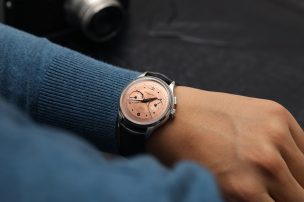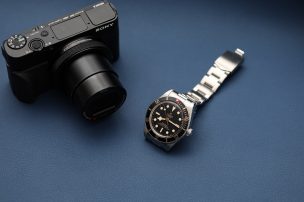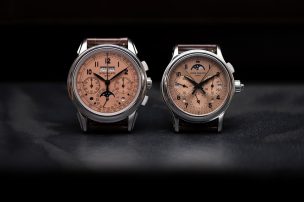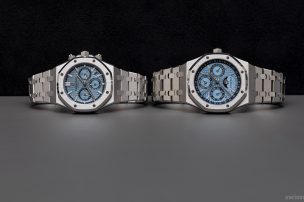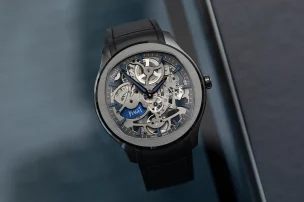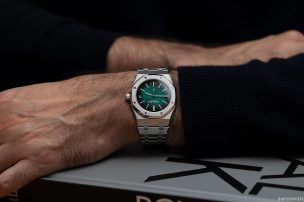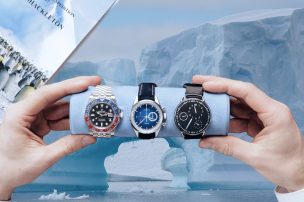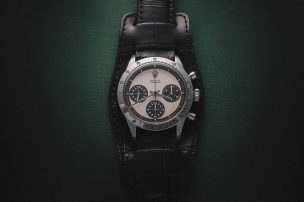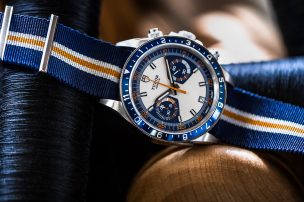
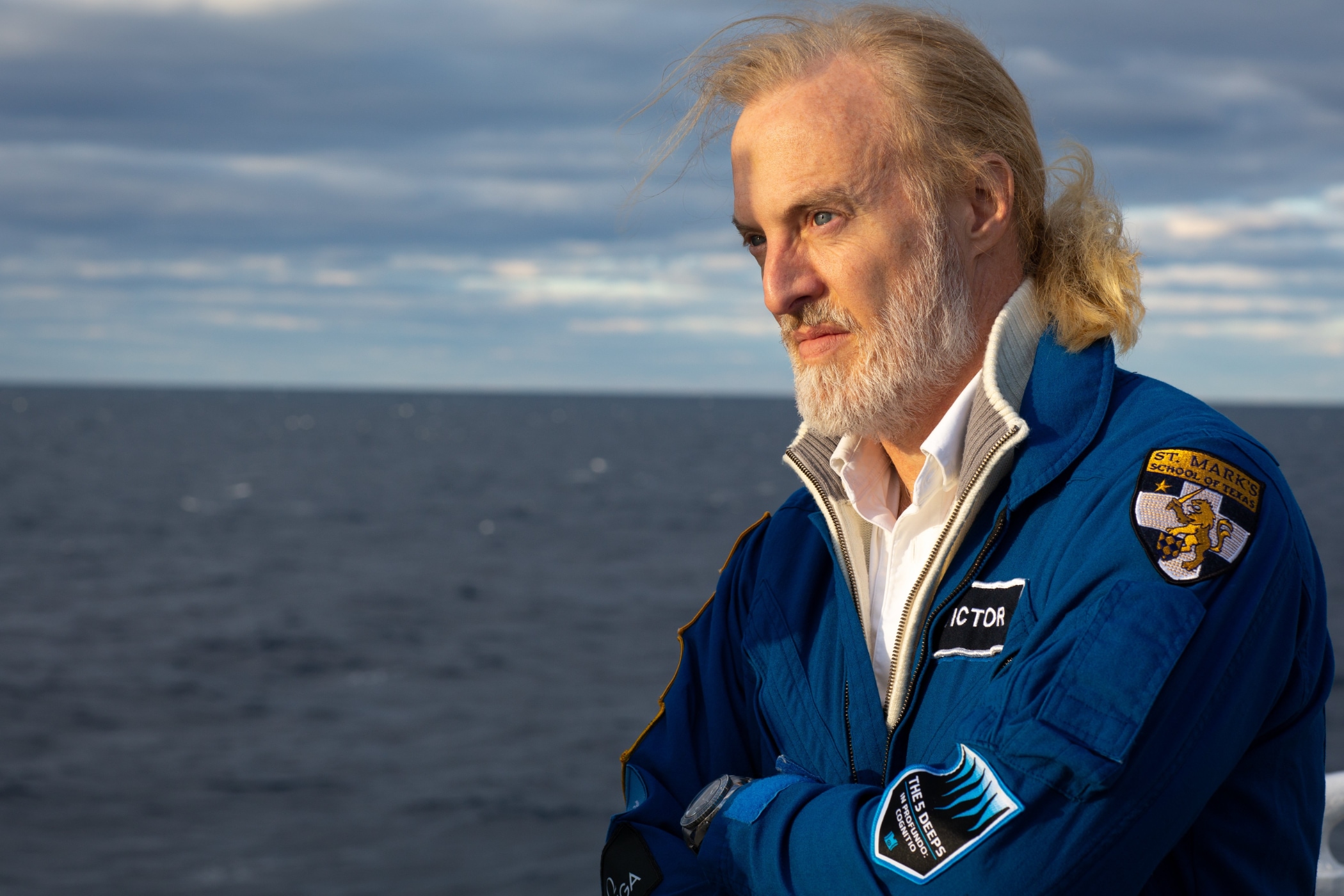
Omega’s Man of the Ocean: Victor Lance Vescovo
Victor Lance Vescovo is a special person in many ways. While visiting the Greek island of Mykonos for the 75th anniversary of the Omega Seamaster, Swisswatches met this titan of a man; slender as a whip, with a white beard and long white hair held scraped back with a hair tie, he looks like a mixture of Moses coming down from the mountain and a Texas hippie. You’d be forgiven for envisaging your archetypal adventurer somewhat differently – yet that is exactly what he is. And a very unusual one at that. The fact that he became an Omega ambassador by chance, before going on to contribute significantly to several world watch records for the Swiss manufacture, does not make him any less impressive.
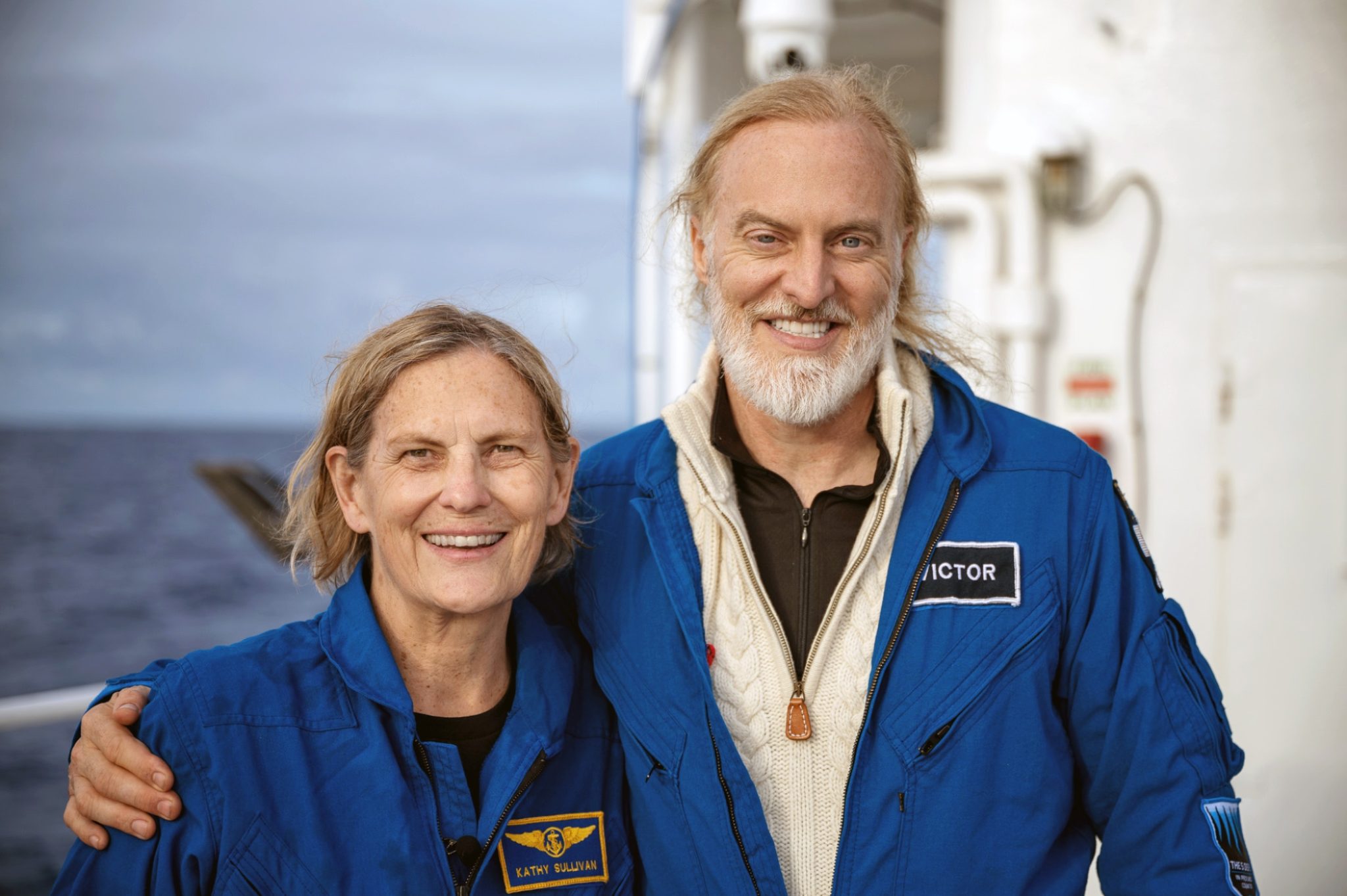
Who is Victor Vescovo?
First of all, he is one of only 73 people who have achieved the so-called Explorers Grand Slam. Even though I had never heard of this kind of Grand Slam before, it is at least as impressive as winning a tennis Grand Slam title, or let’s say a World Tour. Vescovo has climbed the highest peak on each continent of the earth and thus Mount Everest. At the same time, he has been to both the North and South Poles, skiing over 100 km to each. But the former naval officer – having spent 20 years in the Navy before retiring as a Commander – and investor is best known as a deep-sea explorer. In 2019, Vescovo reached the Challenger Deep in the Pacific Ocean in the submarine Limiting Factor, setting a new world depth record of 10,935 metres. In deep-sea exploration, he is the only person to have been in 17 deep-sea trenches. He has also discovered numerous unknown species. In 2022 he flew into space onboard the ‘New Shepard’ rocket, provided by Blue Origin.
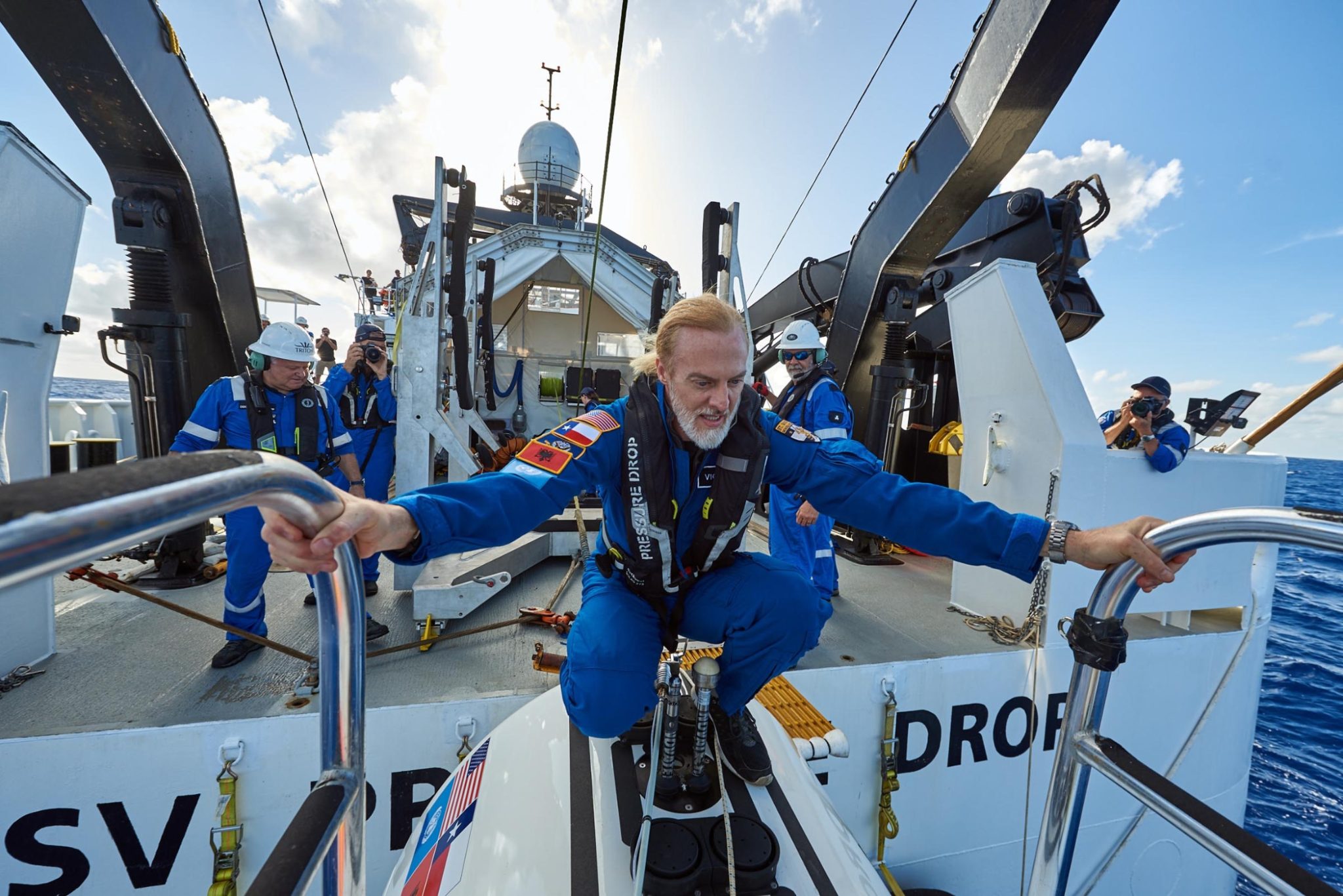
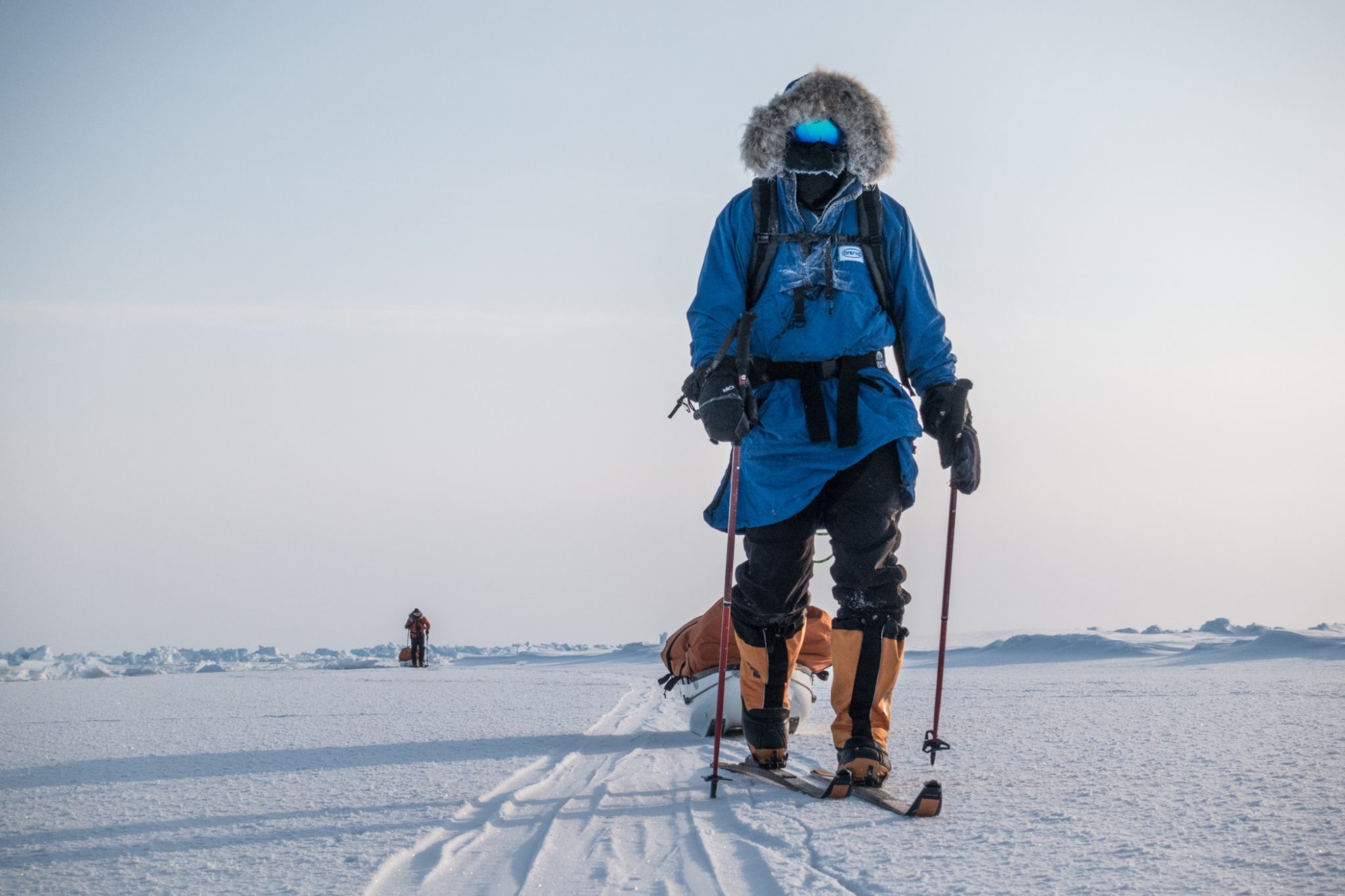
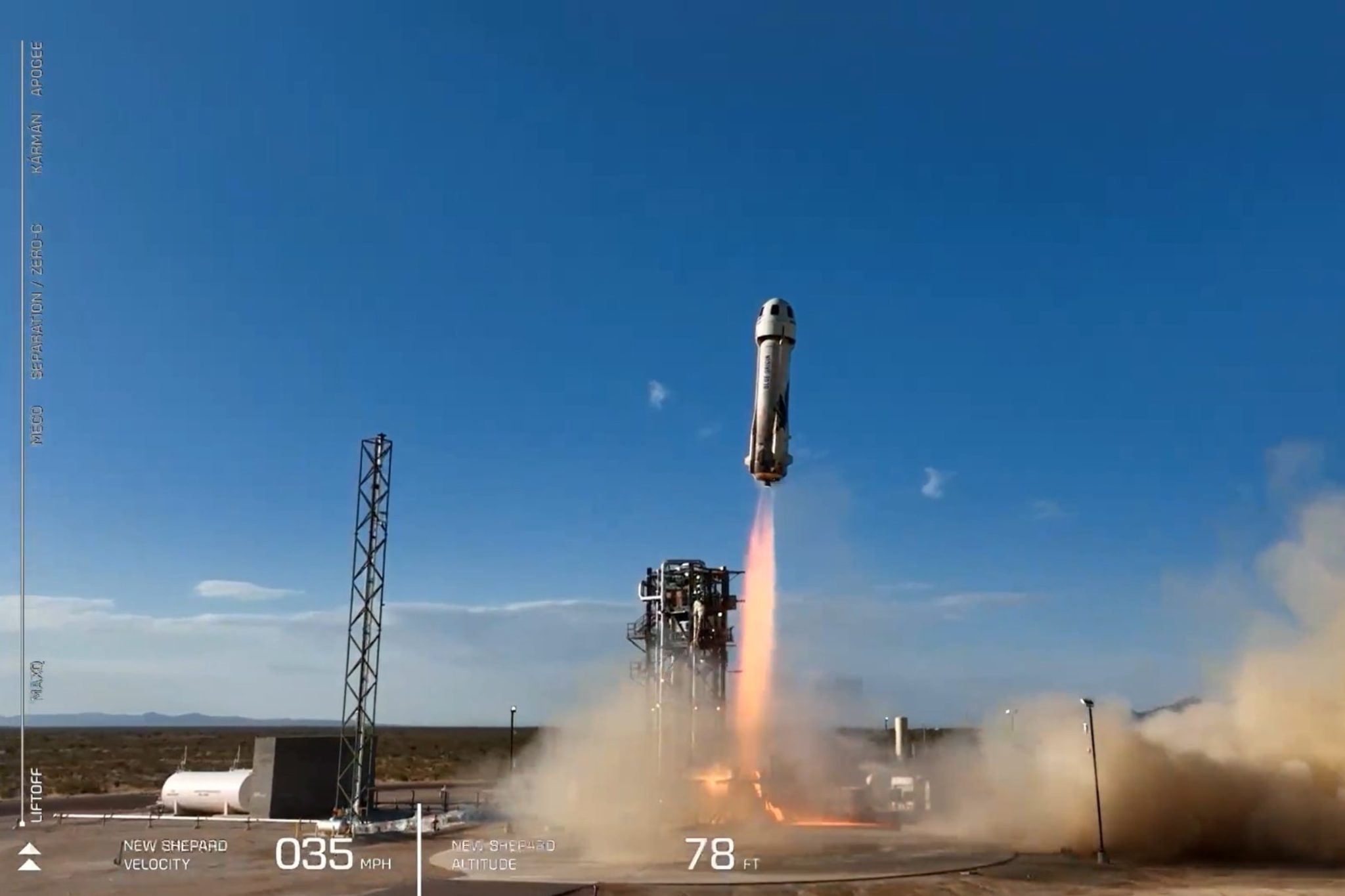
Victor, you are no ordinary brand ambassador. How did the collaboration with Omega come about?
Back in 2016, I was involved in a project to reach the bottom of all five oceans, which no one had ever attempted before, and I was working with a team to design and build a suitable submarine. The submarine would be unique in that it would have ability to repeatedly, and reliably, go to the deepest points in the world’s oceans. But during that time, I was also looking for a diving watch, a chronometer to be precise, with which I could take accurate time measurements when ascending and descending in the depth. It was a safety requirement that an analogue timing instrument would have to be on board and not just an electronic one that would stop working if the electronics failed. I didn’t own a dive watch. So, in my hometown of Dallas, Texas, I went to the local Omega boutique and bought a titanium Omega Seamaster, the same material my vessel was made of. I told them what I was going to do, and I’m pretty sure they didn’t really believe me. Nevertheless, they sold me a 600-metre chronometer. To this day, that’s the watch I’ve taken with me on every one of my dives. As you know from sailors, at some point you tend to become superstitious. I once even halted a launch process because I had forgotten my watch, so I ran back to my cabin to retrieve it, then resumed the dive.
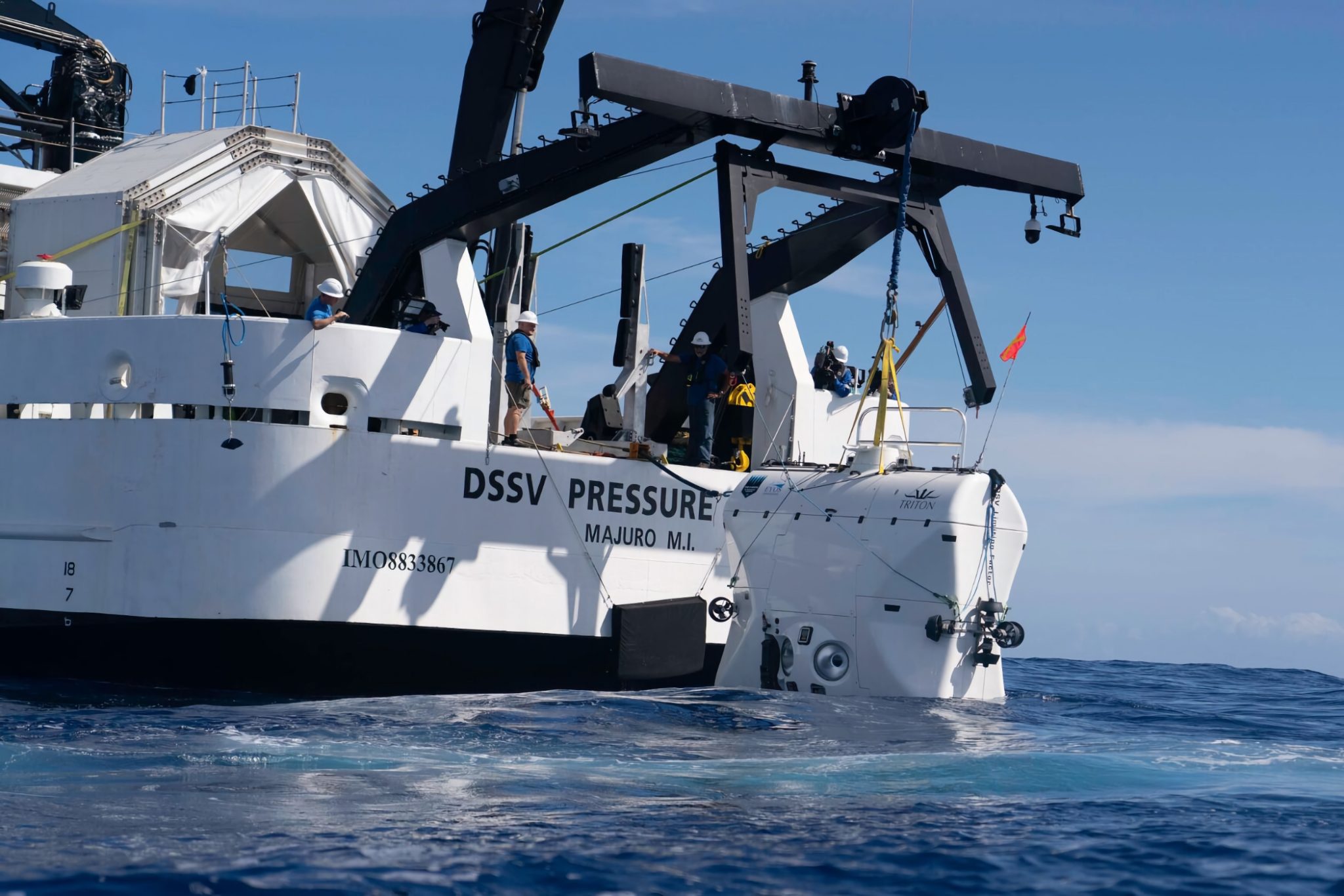
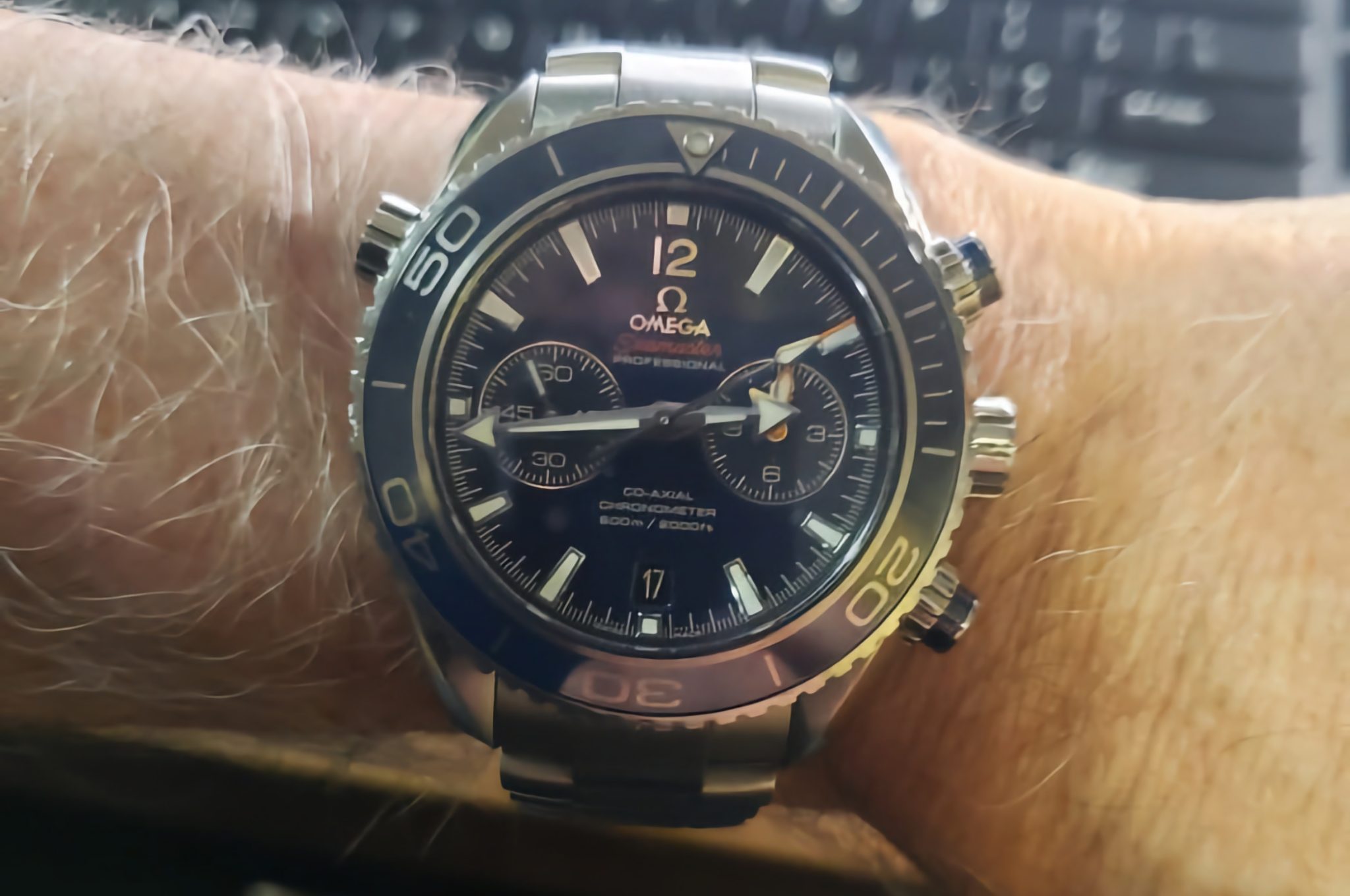
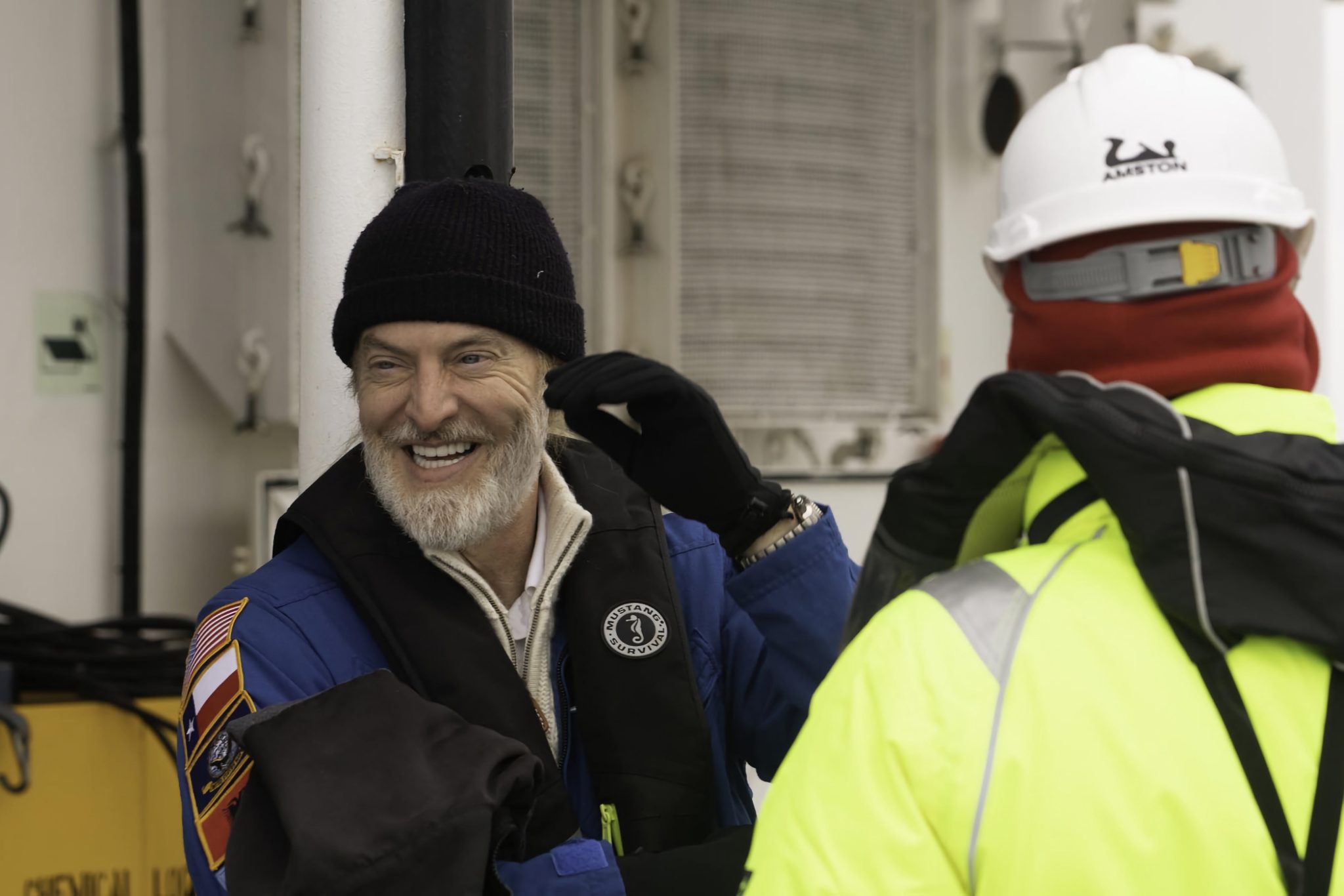
Yet Omega’s headquarters didn’t know anything about your plans?
No, and yet people still think that Omega financed my expeditions. As a brand ambassador, I use the funds to make up for the expenses for conducting marine research wherever we go. This is a small percentage of the total cost, but I want to tip my hat to Omega for the support as the funding was appreciated – and they spent quite a bit gifting Seamasters to every member of my crew, which was a nice gesture. The only sponsor I have accepted to date was and is Omega; quite simply because I like their watches and their approach to innovation and technology and the people are very professional and likeable. I really enjoy working with the Omega team.
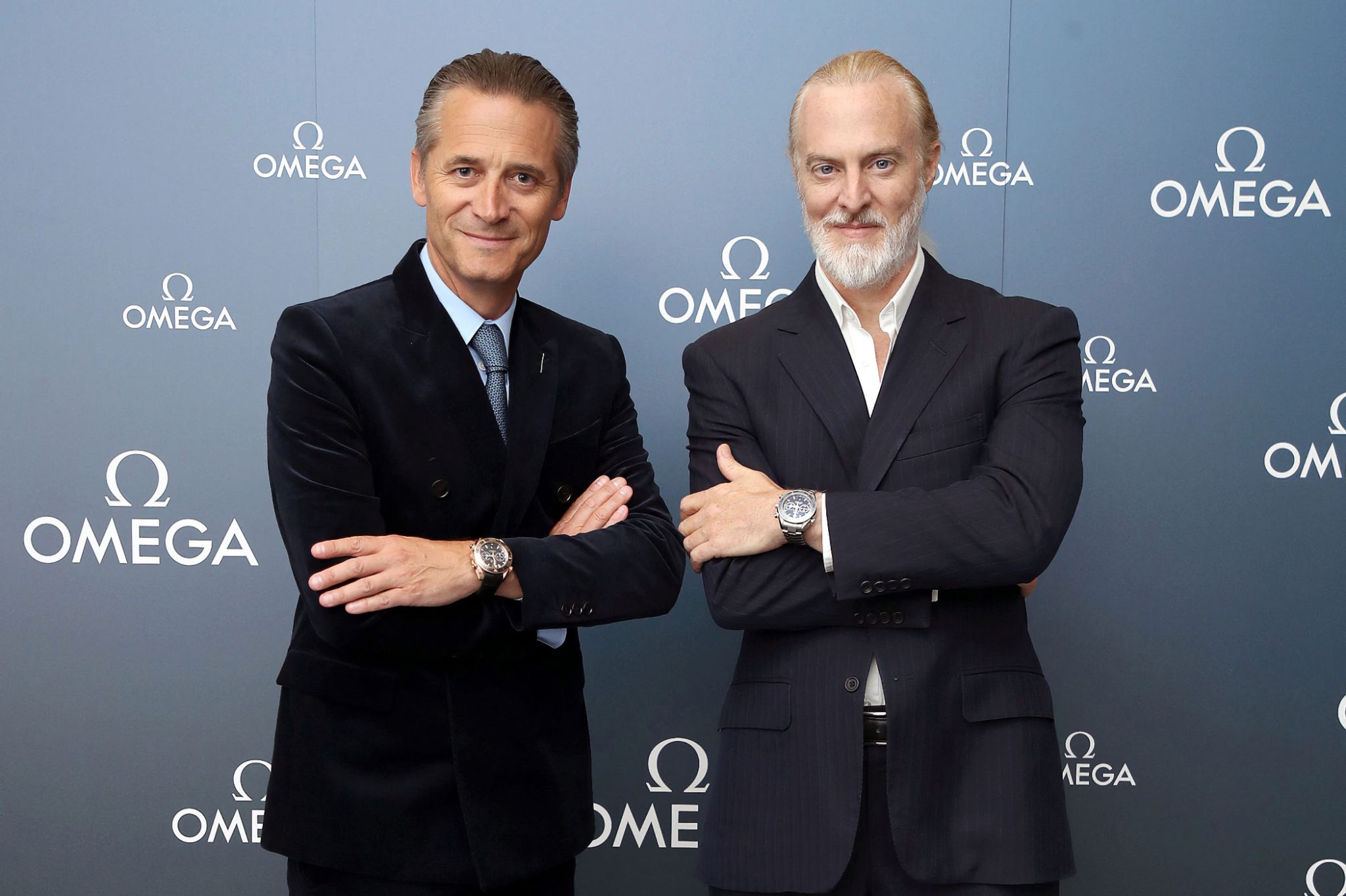
How did you end up working with Omega and setting several new deep-sea watch world records?
I went out and ended up diving the first of the five deeps, in the Puerto Rico Trench in 2018, and that’s when they probably realized I was serious. I then got a couple of calls from Omega saying, ‘Oh, you’re really doing this’. I replied, ‘Yes’. I flew to Switzerland and met with Raynald Aeschlimann, Omega’s CEO, and his brilliant VP of Product, Gregory Kissling alongside a few others, and they were quite excited to show me how innovative they were. They explained that they wanted to create a watch that could go outside the pressure capsule to the bottom of the ocean. I said that if they built it, I would take it there.
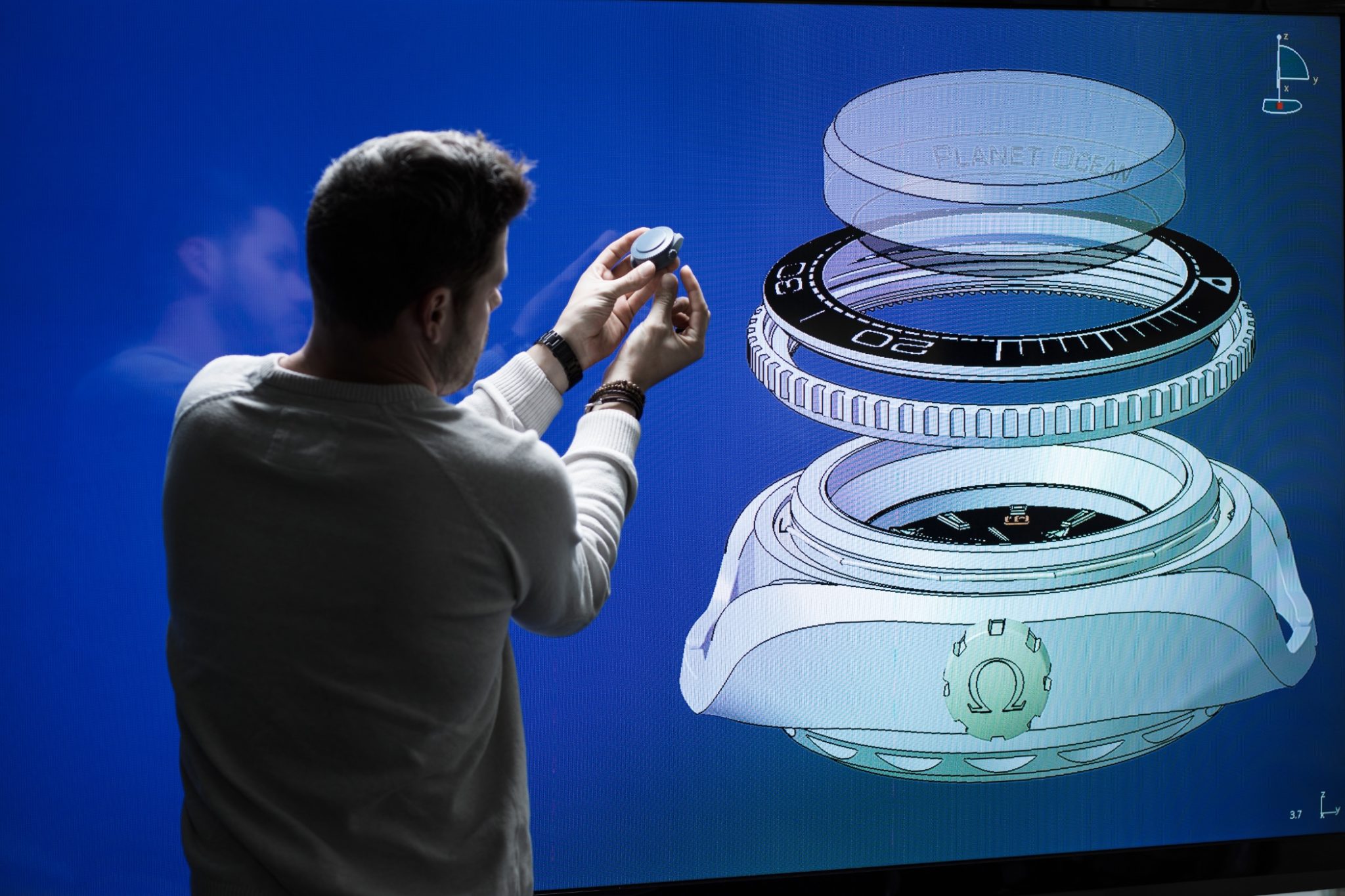
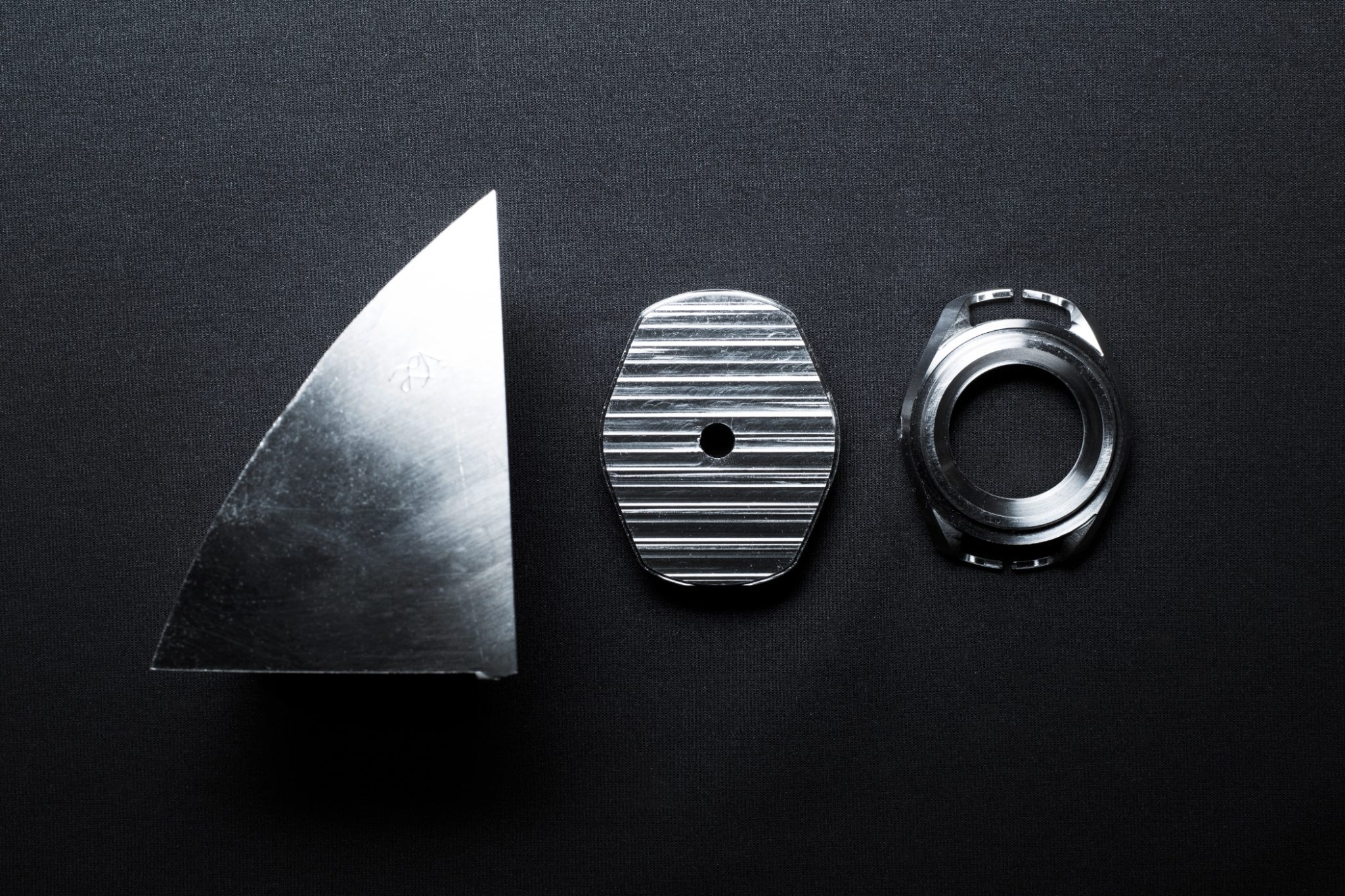
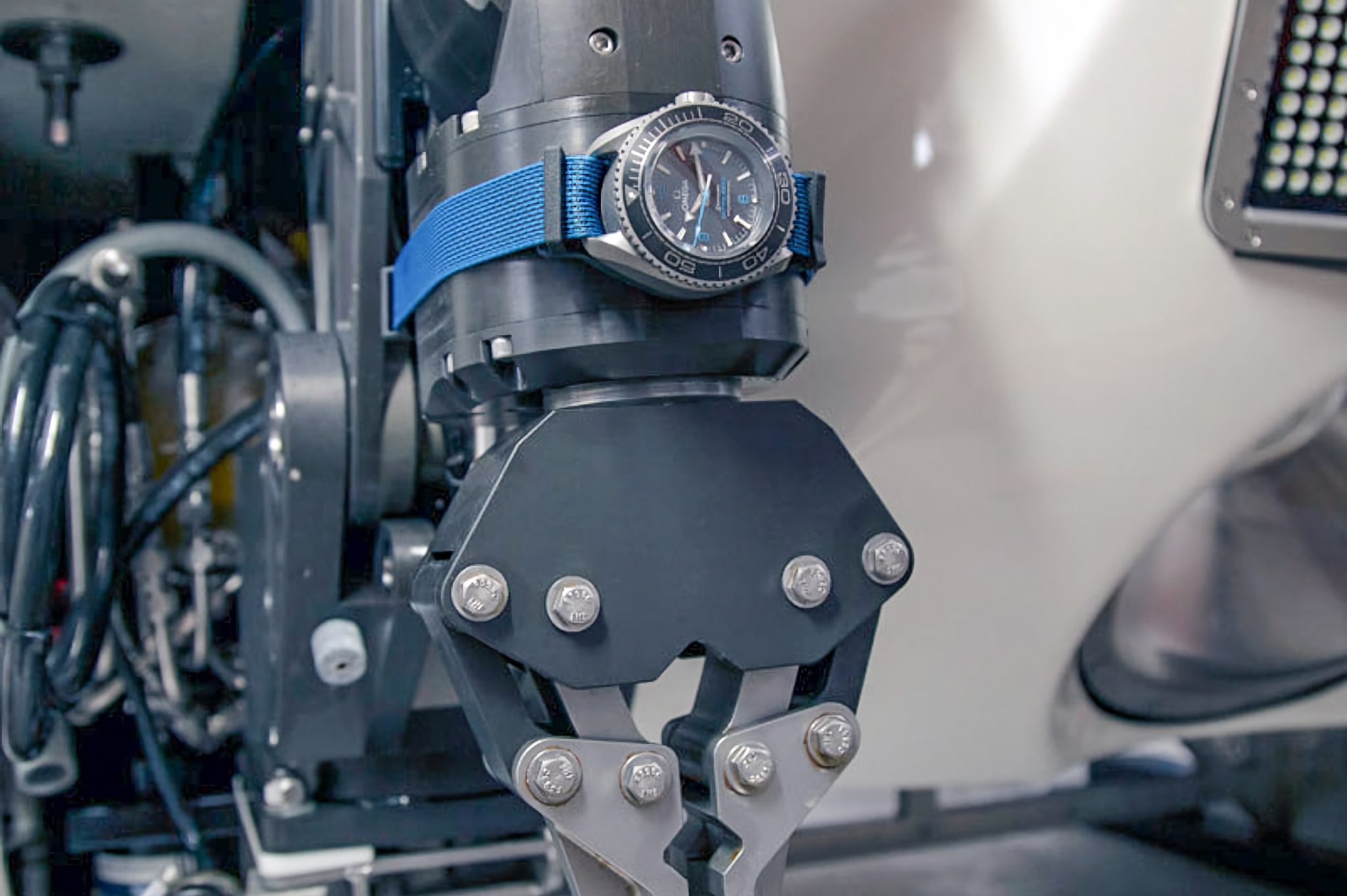
The rest is watch history. It became the Seamaster Planet Ocean Ultra Deep Professional, which was a milestone for Omega. How did they set the world records?
They built three concept watches that could survive the hazards outside the pilot capsule, in corrosive seawater at freezing temperatures, ultimately withstanding pressure of over 1,000 atmospheres (or 16,000 psi). Using the same titanium that was used to build the submarine, they produced these watches at extraordinary speed, designed to withstand the depth of 10,935 metres. We fixed two of them to the robotic arm of the submarine, one in the front and one in the back, and one was attached to something we call a lander, a scientific instrument that has cameras. So, I made the first dive into the trench. The watches survived without any problems, and I resurfaced twelve hours later.
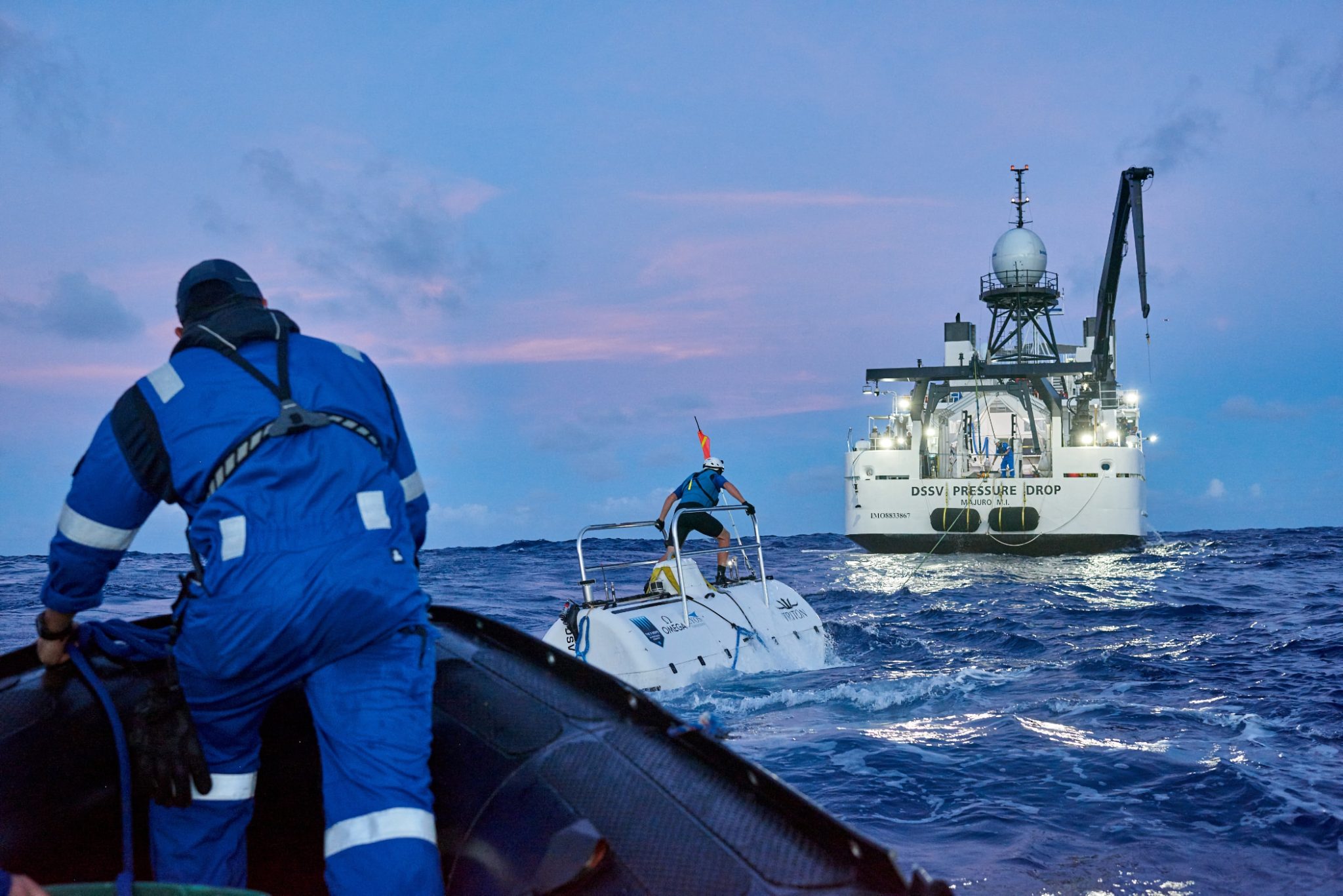
Were there never any problems with the watches?
Well, that became an interesting story. I came back up after my second dive – the first repeat dive to the bottom of the ocean – but the lander didn’t come up; it was stuck at the bottom of the ocean. We were very disappointed and resigned to its fate, until we realized we had a vehicle that could possibly rescue it. Over the next few days, we made a plan to send the submarine back down to look for the device, whose battery was probably now dead or at least very weak, meaning we couldn’t communicate with it. After extensive search, we found it and the attached watch. We used the extended robotic arm to push the lander out of the mud, which then began to rise, and the lander made it to the surface four hours later. We set it down on the ship’s deck and lo and behold, the Omega was working perfectly after two days in freezing temperatures and 16,000 pounds per square inch of pressure. That is just absolutely extraordinary. That same evening, I wrote an email to Switzerland announcing our success and asking if I should take all the watches down again on the next dive? Omega said at the time: ‘No, we are good.’
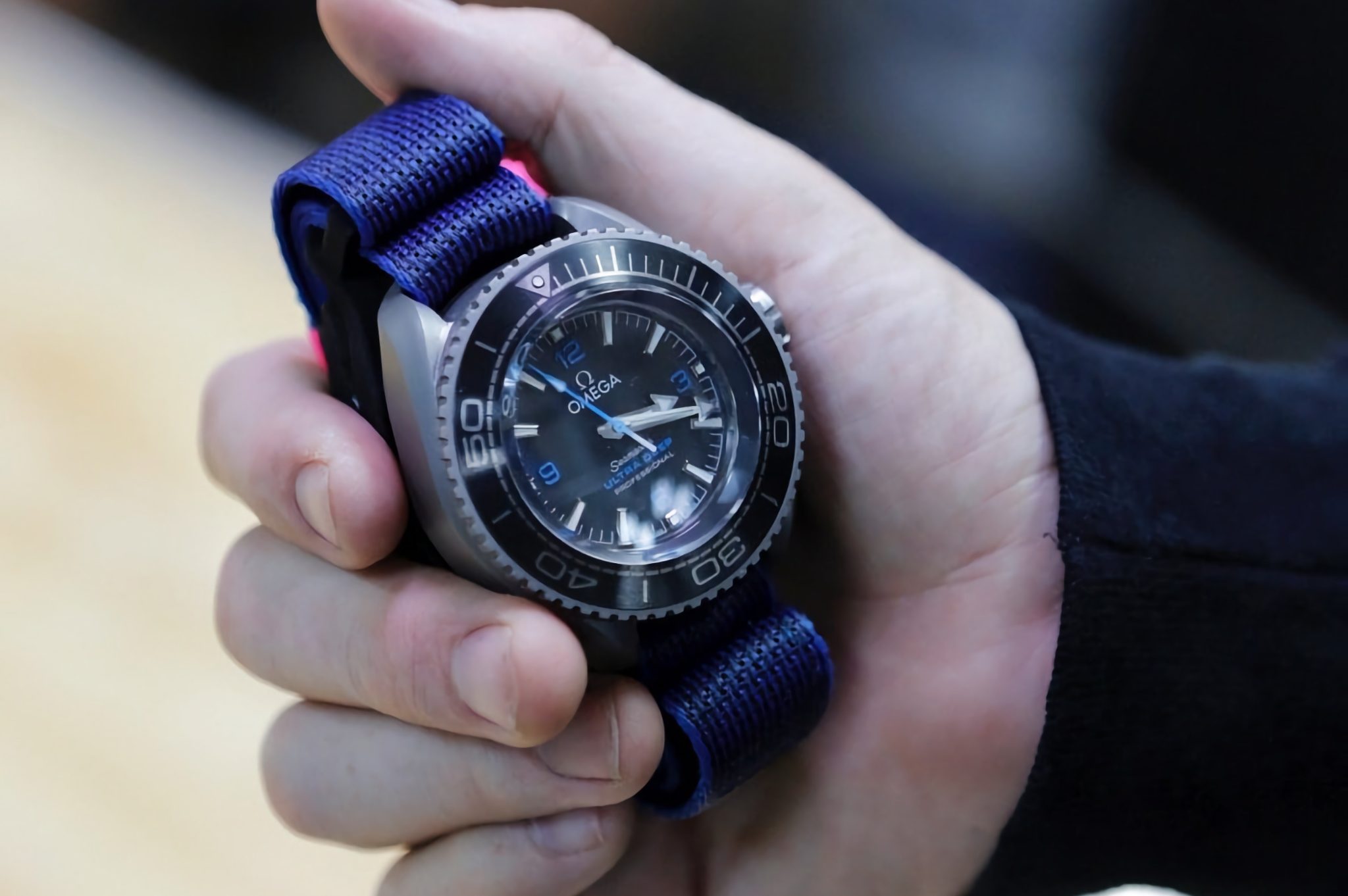
But one of the watches is yours and has a very special history.
Yes, Omega told me, ‘You still have your own watch so you can take that one down with you at any time.’ So, over the next few years, I took my Ultra Deep Professional 11 times out of my total 15 dives into the Challenger depths. It’s an absolutely extraordinary piece of engineering. Not only does it hold the world record for the longest dive at the deepest point in the oceans, it is the only one that has done it more than once: 11 times..
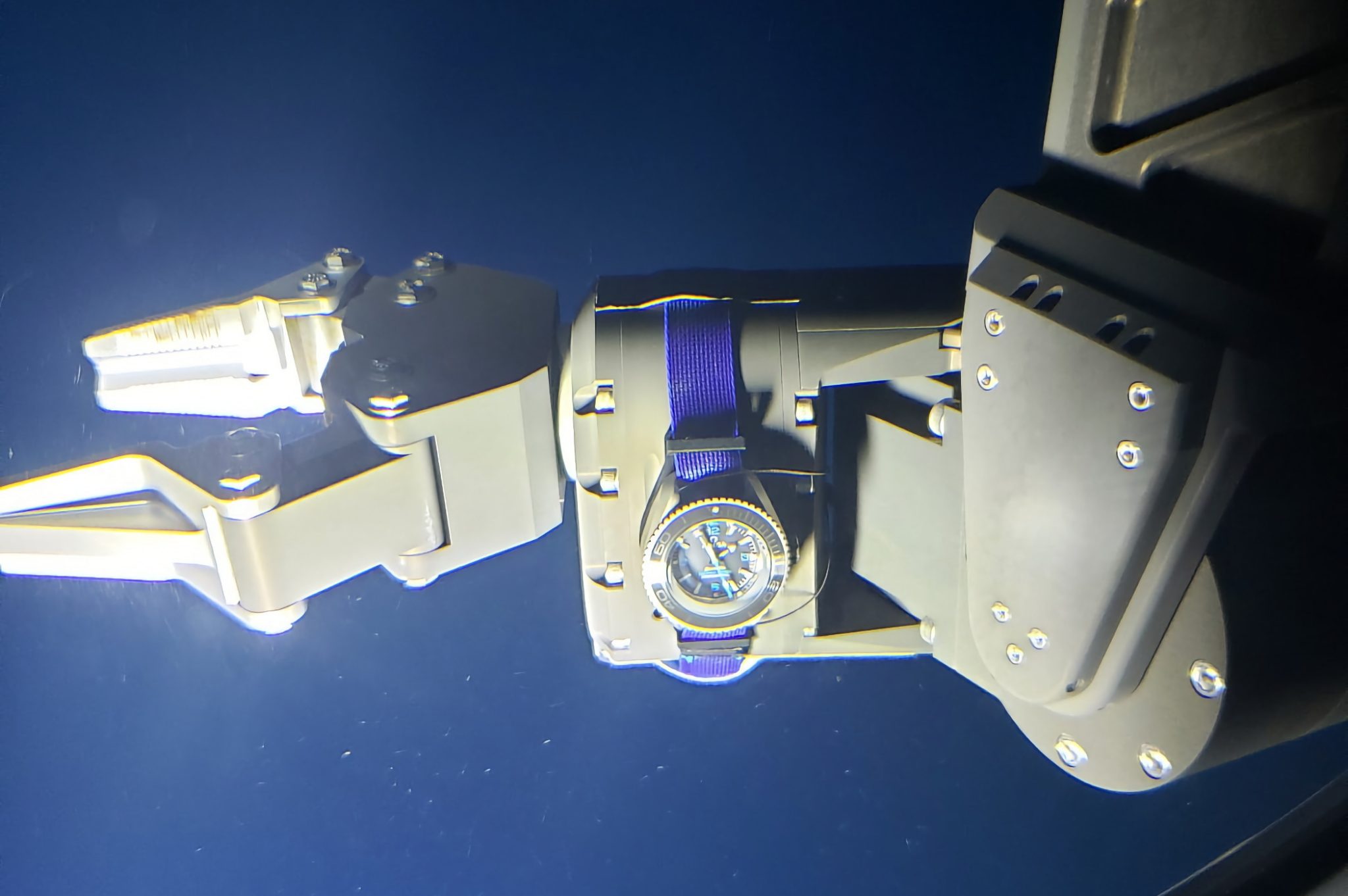

Where are the three concept watches today?
Well, of the two watches that Omega has, one is in their museum, and I believe the other is kept in a safe somewhere? I am not sure. Mine still works perfectly and is in a bank vault in my home city of Dallas, Texas. I think that’s emblematic of Omega’s commitment to not only innovate, but to make its watches so good that they work reliably not just once, but over and over again under extraordinary conditions – deep ocean, space, anywhere, really.
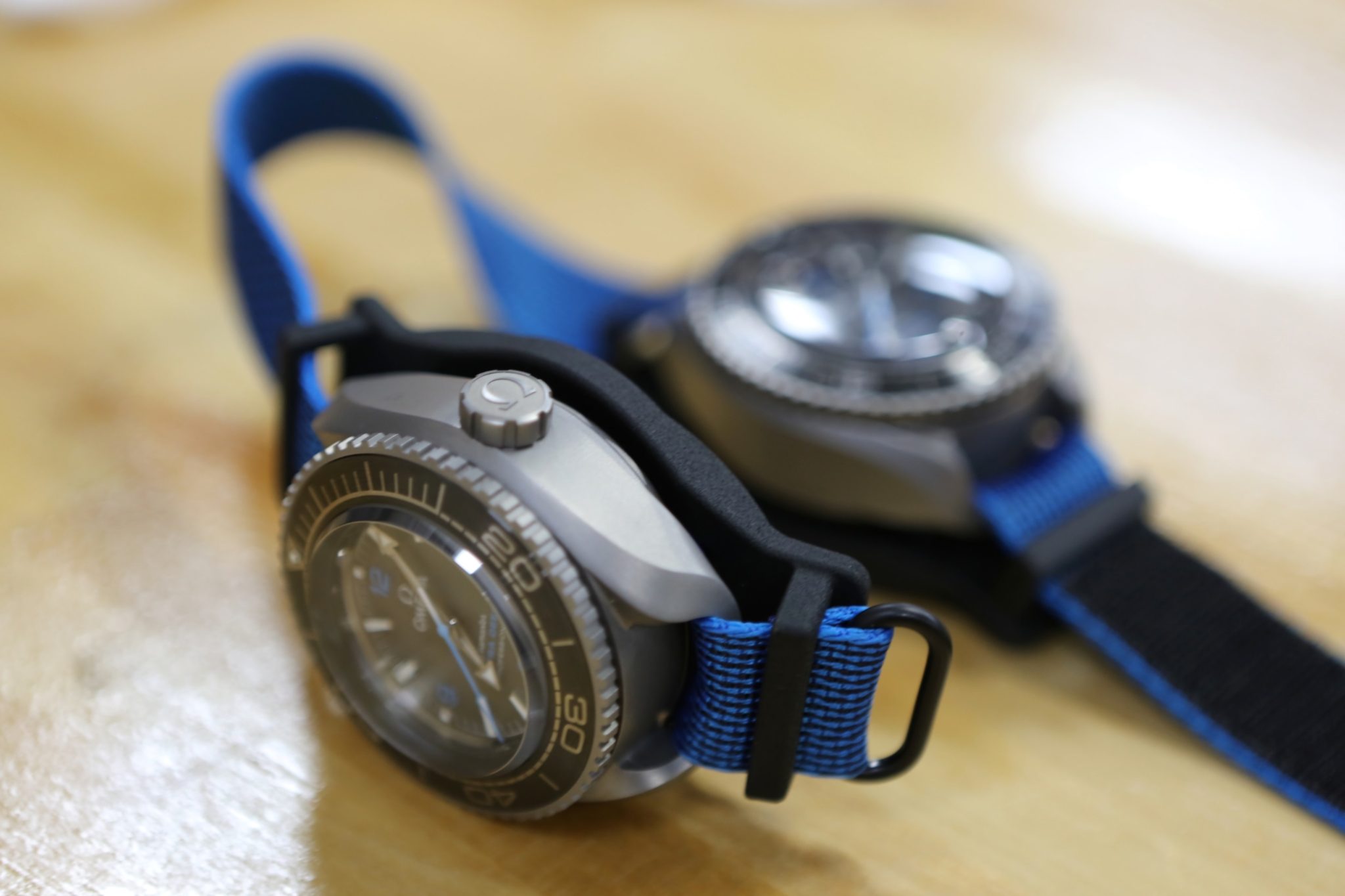
Something your expeditions have in common with mechanical watches is that you also reuse your submarines.
Of course. The submersible Limiting Factor we used made perhaps thirty or more dives during the entire Five Deeps expedition. After that, we dived even more. I’ve personally been to the bottom of 17 deep ocean trenches so far. There are, I think, a total of perhaps 26 or 27 worldwide, depending on how you count them. The last ten still bother me. I’ll probably spend the next few years trying to develop a new machine and expedition plan to visit them, because they’re all – I believe – unmapped and unvisited by humans.
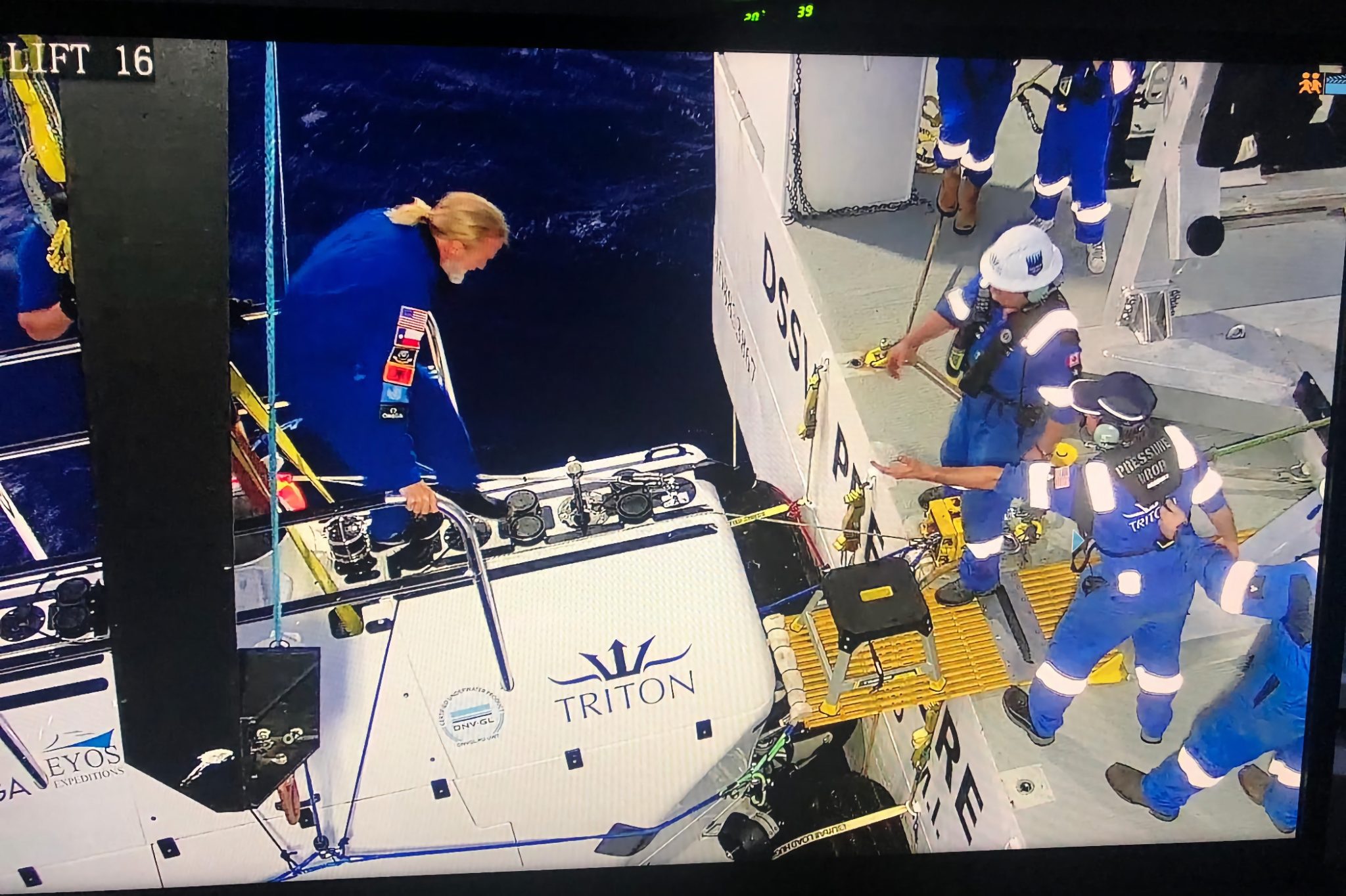
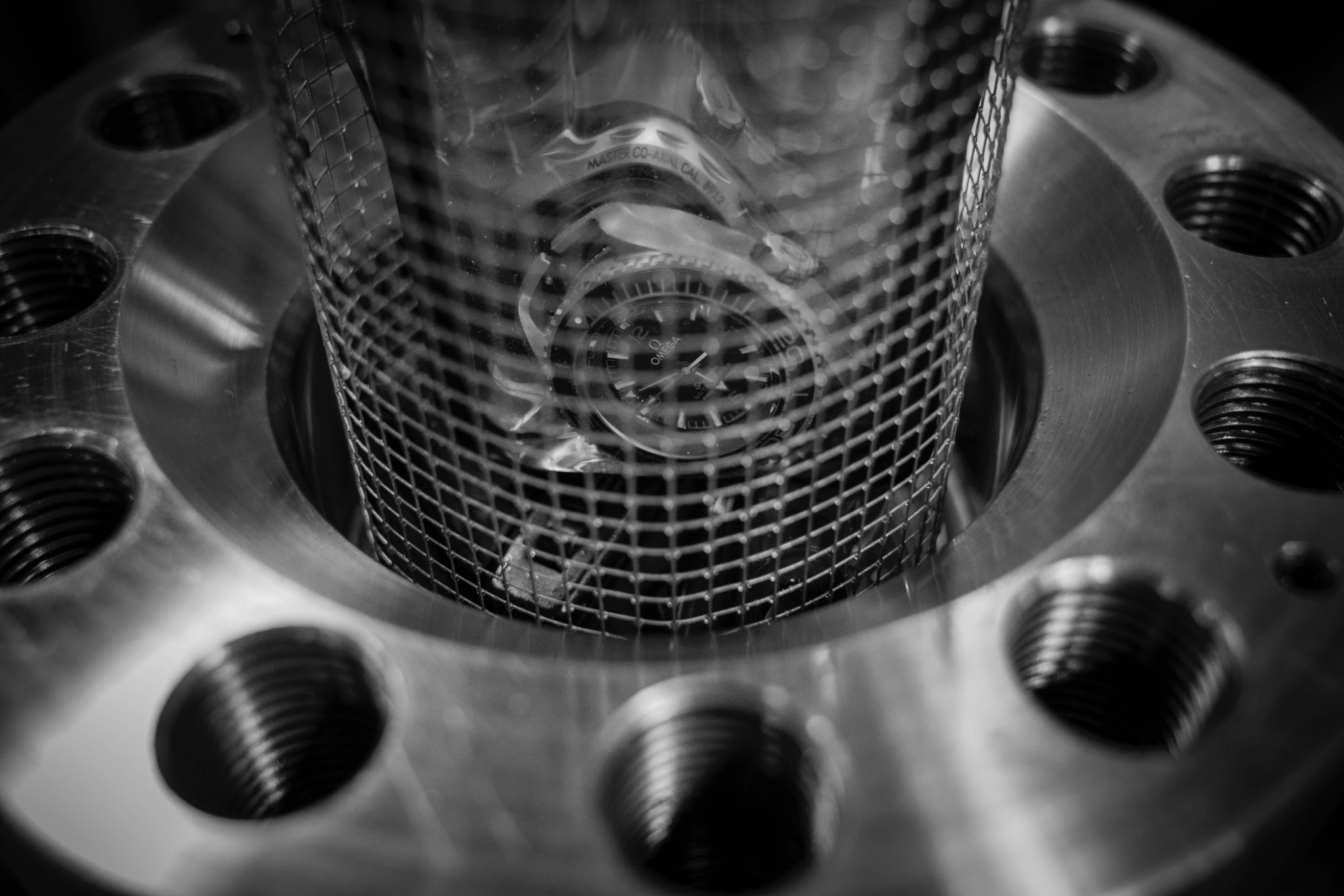
Isn’t it bizarre that, in the middle of the 21st century, some parts of the earth are not even accurately mapped?
At the moment, around 25 percent of the oceans are still completely unexplored – and the oceans make up 70 percent of the surface of our planet! If one does the math, more than half of our planet is still completely unexplored, which is extraordinary. And one of the reasons for that is that we simply don’t have vehicles that can easily get to the bottom of the ocean and explore it. I financed the whole expedition myself when I developed the submersible; I had no sponsors from the business world. I’ve only ever had one – and that’s Omega. Not because I really needed it, but because I really admire their values, commitment to real technological innovation, and of course, I just like their watches.
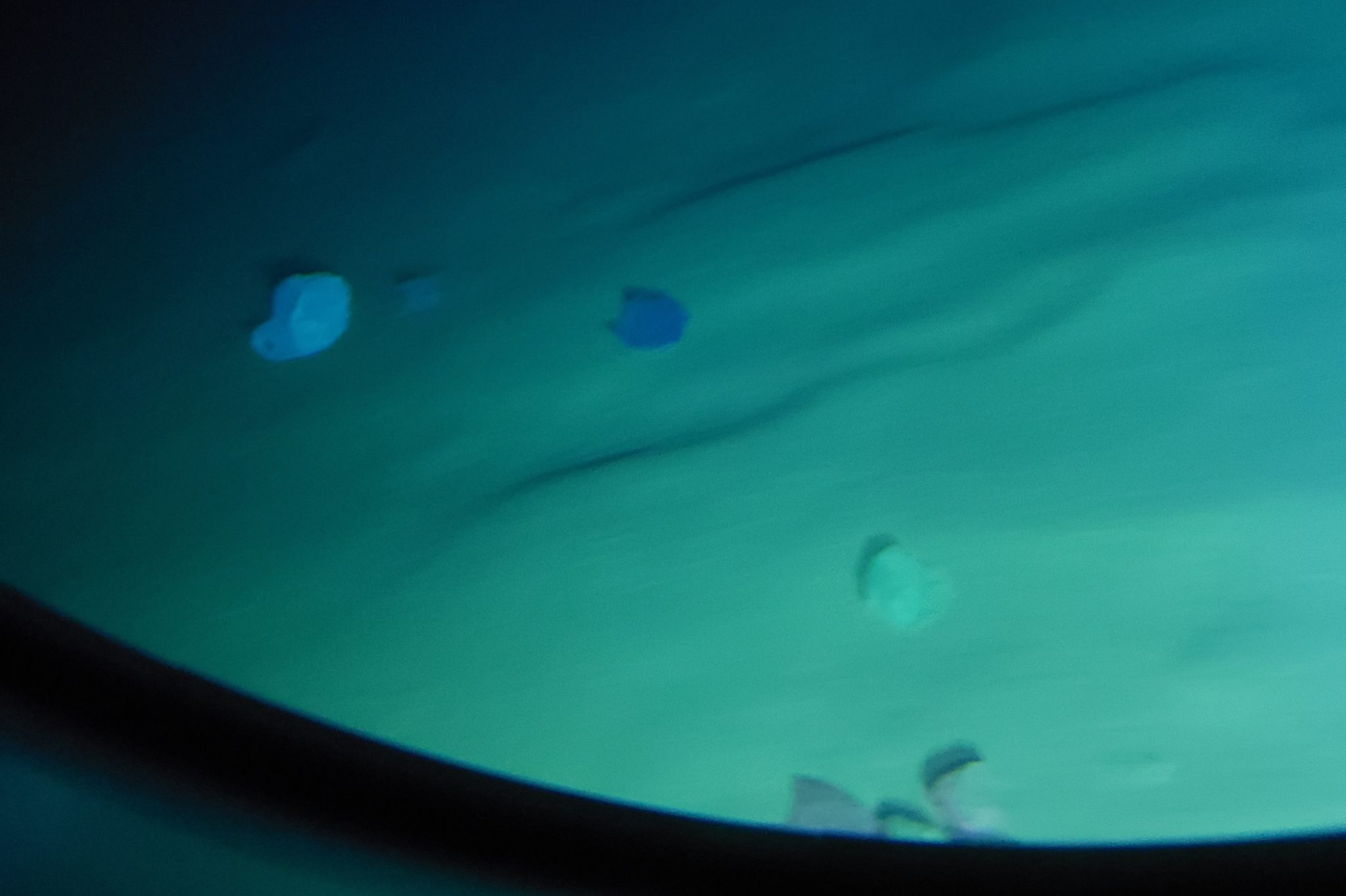
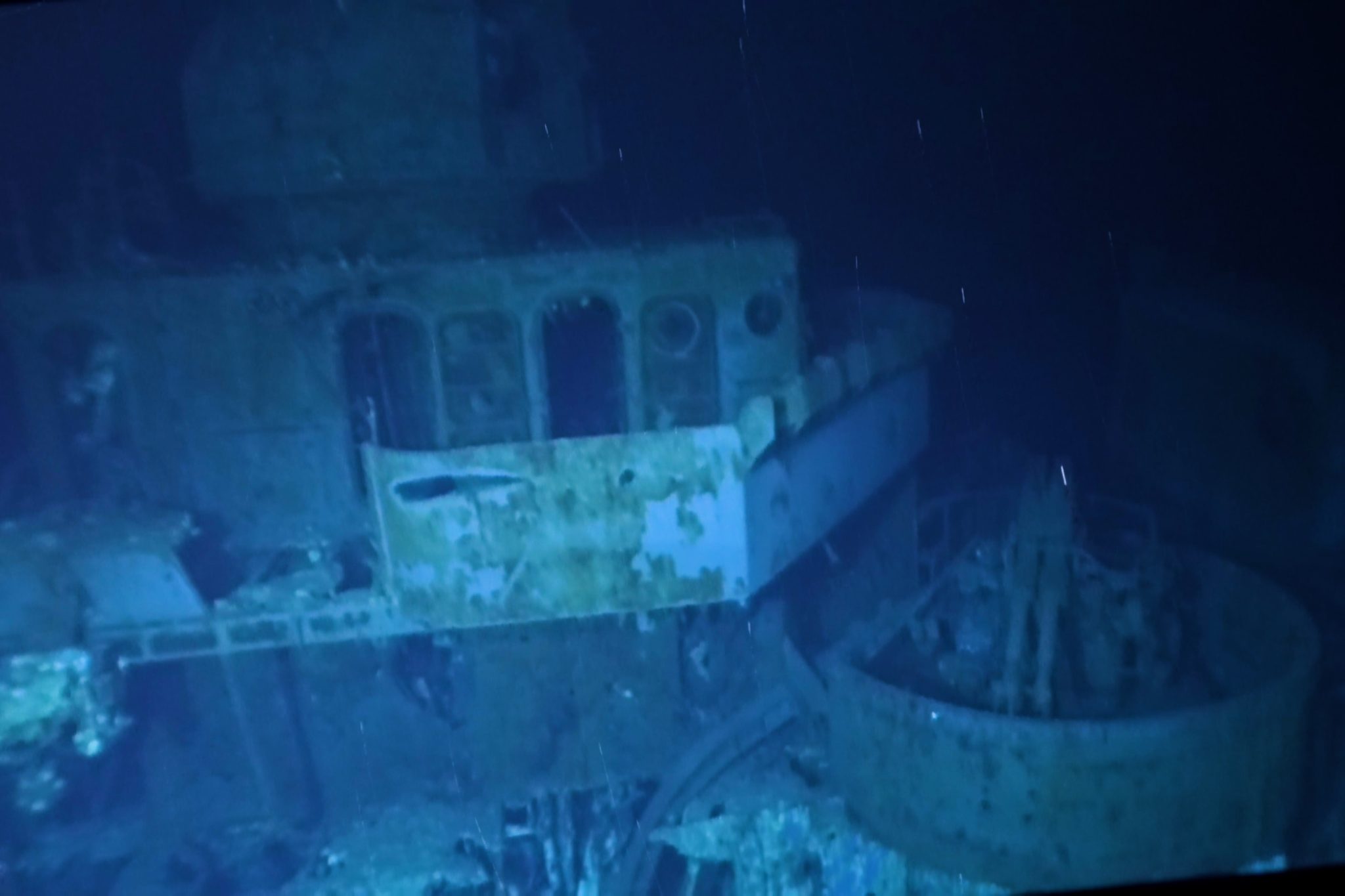
Mapping will take years. What challenges are you taking on in the meantime?
In the meantime, I have sold my diving system to the American billionaire Gabe Newell, who has promised to use it to conduct scientific research for the next five or more years, which is great because the system is extremely expensive to operate. I’m now going back to the lab, so to speak, to figure out how we can build an even more capable submersible for these extreme ocean depths, which will be even more reliable and possibly even cheaper. This way, we can do even more scientific research and even better mapping. We are in the process of planning some other expeditions, which unfortunately I can’t talk about.
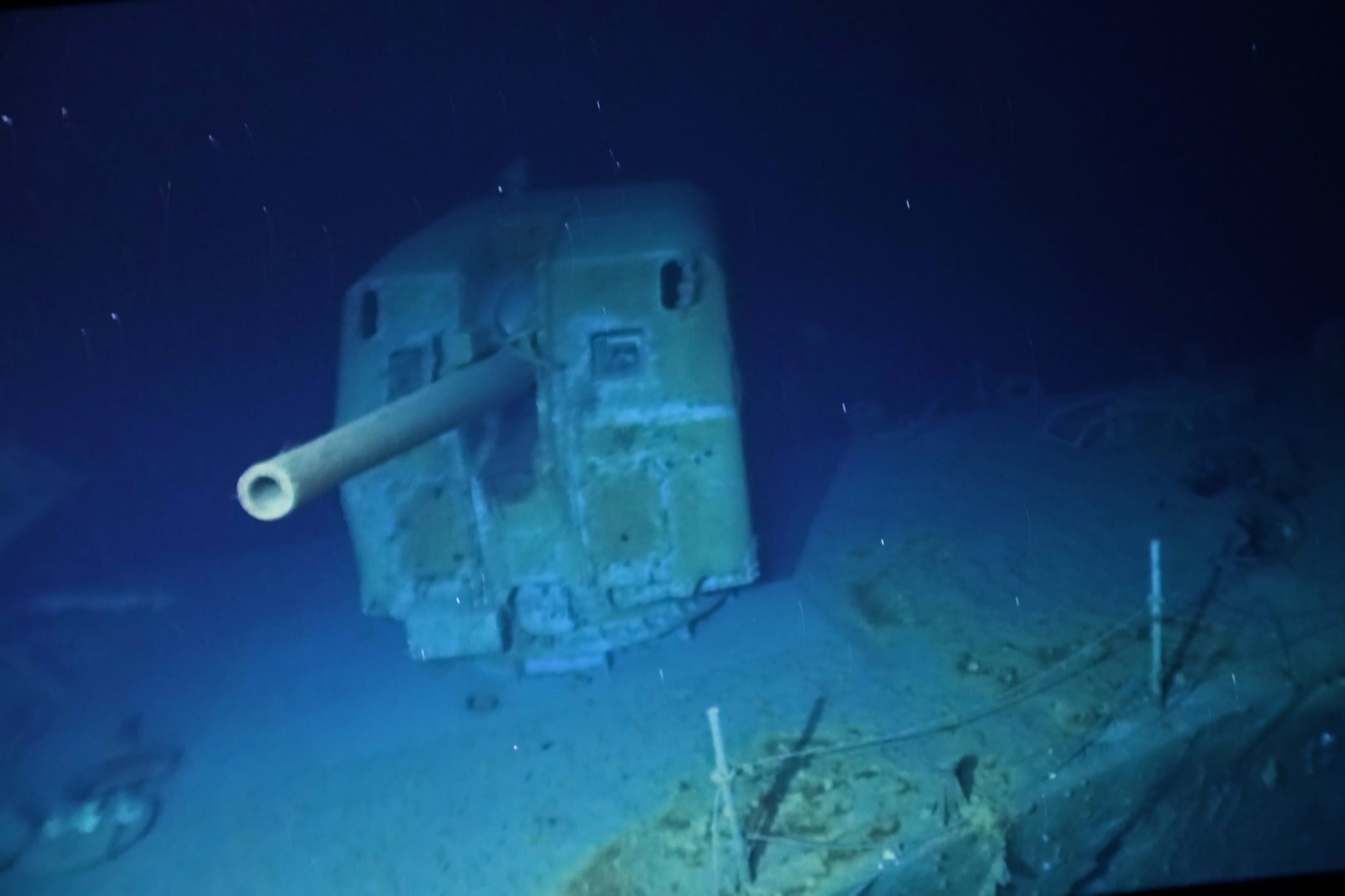
Why? Don’t you need the PR?
It’s simple: I like to do things and only talk about them when they have been done, and not the other way round. I do this because advertising what you will do increases the pressure to be successful enormously. And since what I do is not one of the safest things in the world, you just don’t want that extra pressure to force an attempt to complete a goal. I have always acted according to the philosophy: If the conditions are not good or the equipment doesn’t work, you just don’t want any extra pressure from the outside. It’s a question of risk management. When people make a really big announcement to do something that is particularly risky, how does it affect the psyche of the individual and the team? There’s a really strong pressure to do it and perhaps take chances with safety. Mountain climbers suffer from that all the time. When you’re on the mountain, the weather is really bad and you’re not feeling well, you still build up this enormous pressure to actually do it, even if it’s not completely safe. So, I come from more of a mentality where I want to complete the mission, but I don’t care how long it takes. I abandon missions all the time and just try again another day. I don’t like outsiders’ expectations influencing my decisions, and I think that’s one reason why I’m still here.

Speaking of the pressure to succeed: What was your experience following the accident involving the dive boat Titan at the wreck of the Titanic?
The Frenchman Paul-Henri Nargeolet, who died in the accident, was the technical advisor for my submersible, and during the expedition, he was my safety officer. We both served in the Navies of our countries. I speak French, and he is French. And then, of course, I lost my friend Hamish Harding. He and I went down to the bottom of Challenger Deep, and we were actually there longer than any human has ever been there before: four hours and 15 minutes. We also went into space together. That was just very tragic to lose them both.
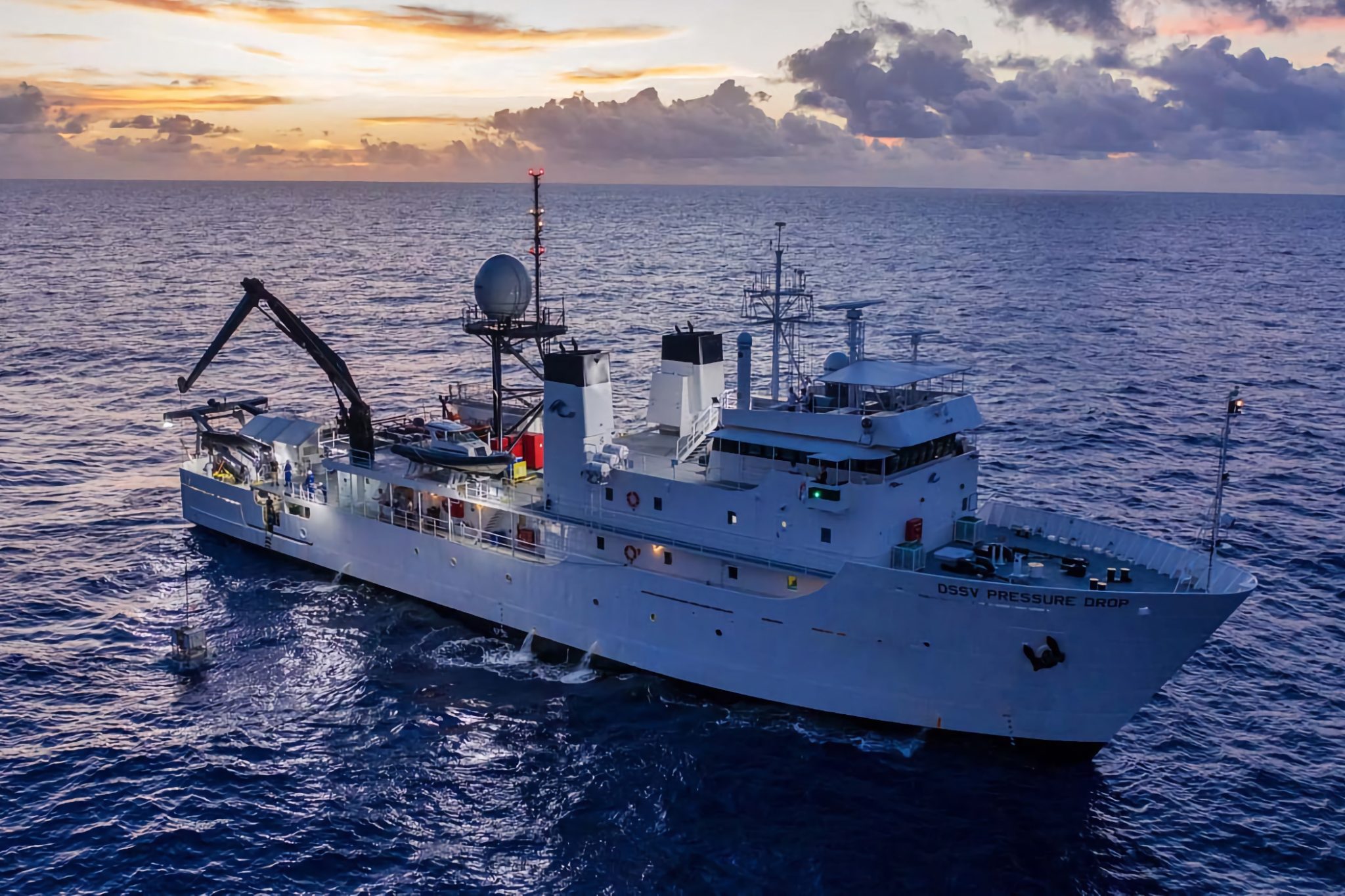
Our sincere condolences. What did you learn from it?
This is a situation that can happen when proper precautions and safety protocols are not followed. It can be a difficult balance to try to innovate and do things better and cheaper. But sometimes old conventions are better and safer. In the case of the Titan, the design of the submersible was cylindrical, not spherical, and they used three different materials in the capsule: carbon fibre, epoxy resin and titanium. Any mechanical engineer will tell you that materials can change over time when exposed to different loads. A cylinder is not the strongest form to withstand pressure. A sphere is. Take the material titanium: every time I dove in my spherical titanium pressure capsule, it became even stronger because the metal was virtually forged again. But with a cylinder, the pressure tries to find the weak point. And with dissimilar materials, eventually a crack apparently formed and the pressure trying to get in is absolutely unyielding. It will relentlessly try to find the one weak spot on your submersible and exploit it. And that’s exactly what happened.
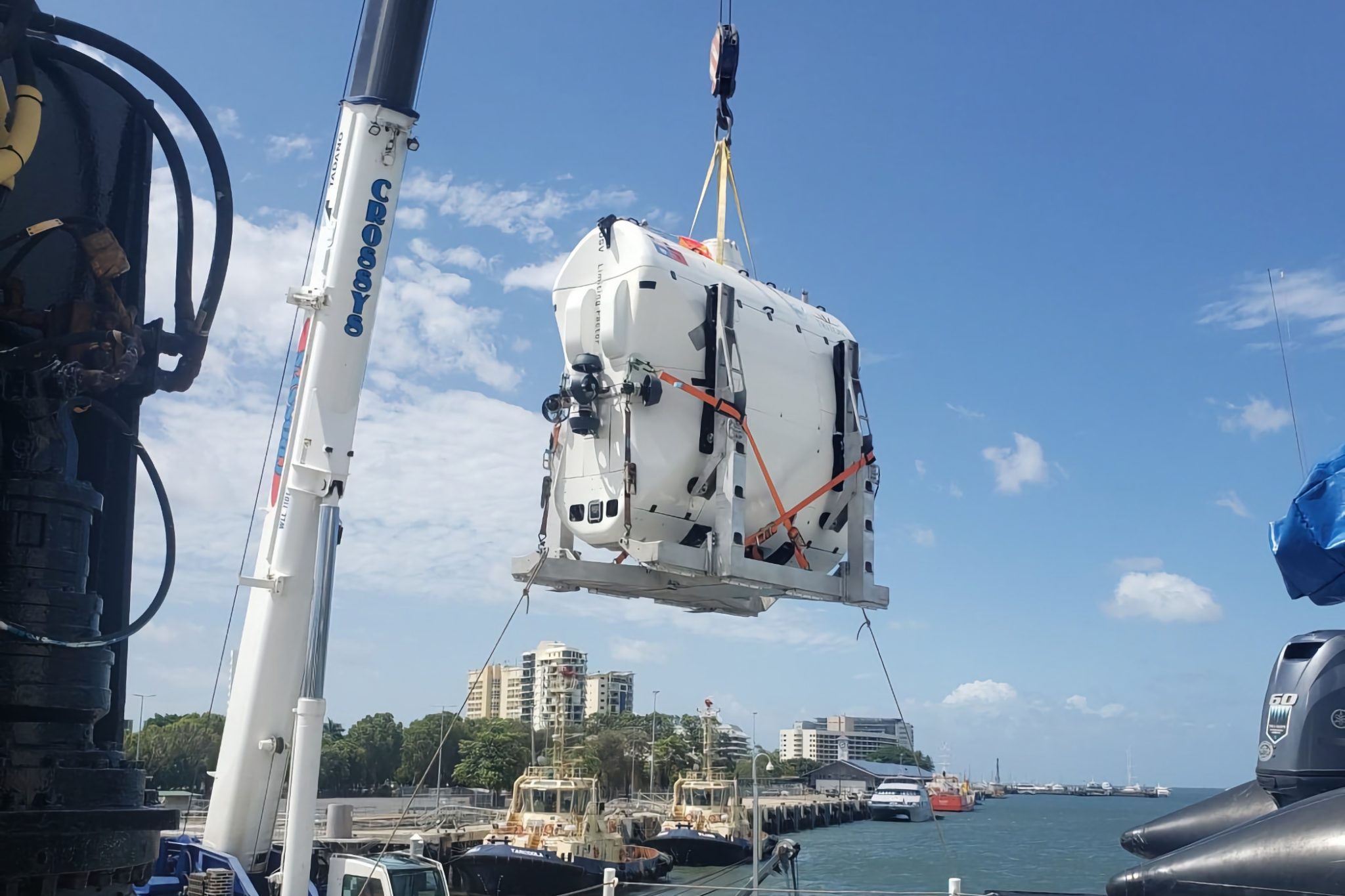
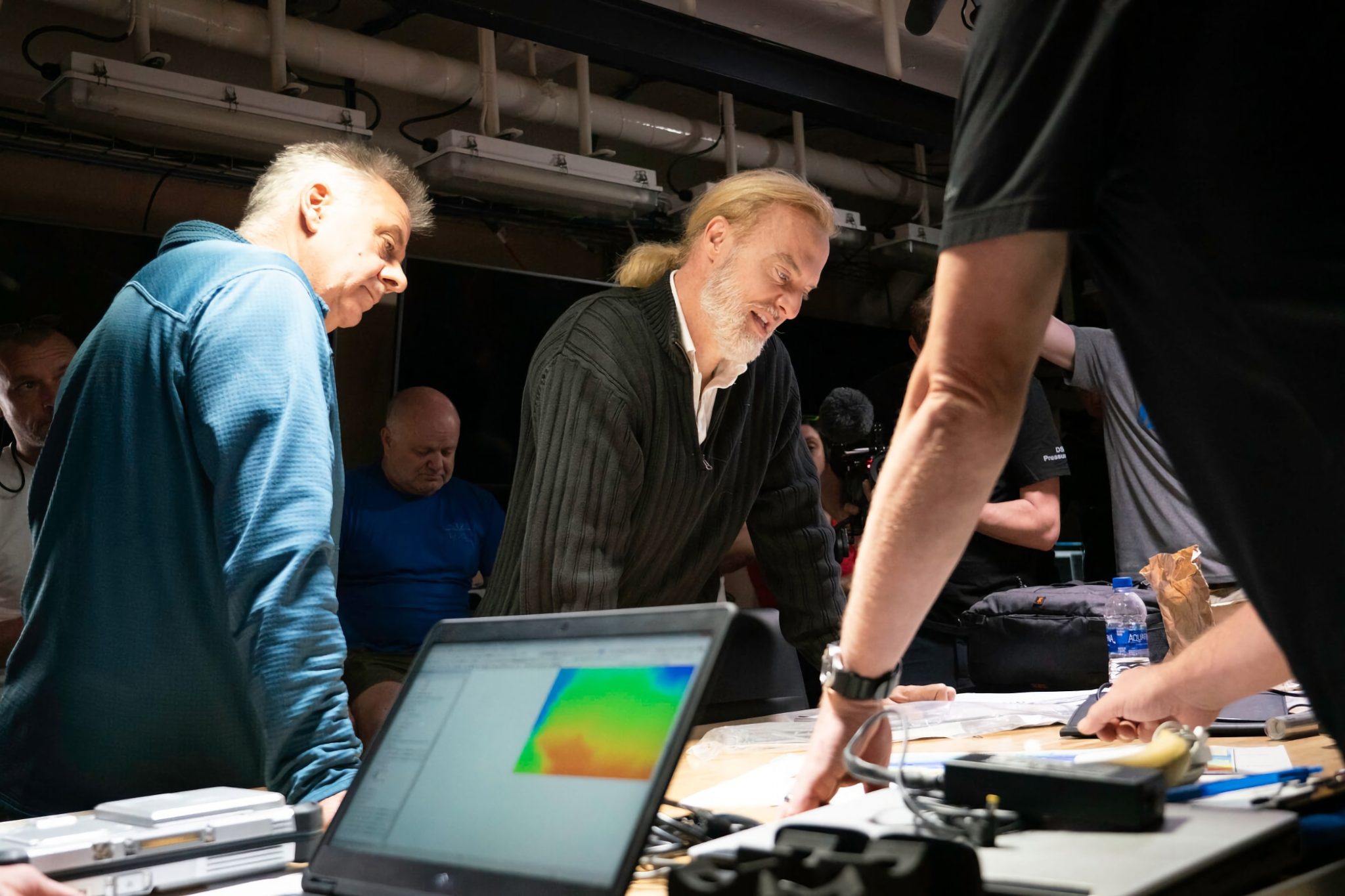
Attempts were made to find the submarine and people thought they heard noises.
If the worst happened and you were trapped at the bottom of the sea, a rescue procedure would probably have been to knock on the hull of the sub every 30 minutes, exactly, and ideally in Morse code to signal to the people on the surface that you are still alive. If it’s a random sound, people might think it is surface ship noise or something ese in the ocean such as biological activity. But if something happens every 30 minutes, exactly, it is almost certainly human. That’s one of the great advantages of having a very reliable, very accurate mechanical watch. That’s why I always have my Seamaster with me when I dive.
Critics like to accuse people like them that it is pure thrill that drives them.
I’m not sure it was an astronaut who addressed that issue – but he had a brilliant answer, which was, ‘Exploration is curiosity in action’. All the explorers I have ever met are extremely curious people, not simply thrill seekers, and who are much more curious than we are concerned about our own safety. We just want to know what’s over the next hill. It’s a compulsion. I wouldn’t be happy if I didn’t go exploring. Maybe it’s genetic. The most dangerous thing that ever happened to me was when my parents gave me a bike when I was six years old. Good thing my mother was a nurse, because I explored a little too intensely a few times and had to be patched up.
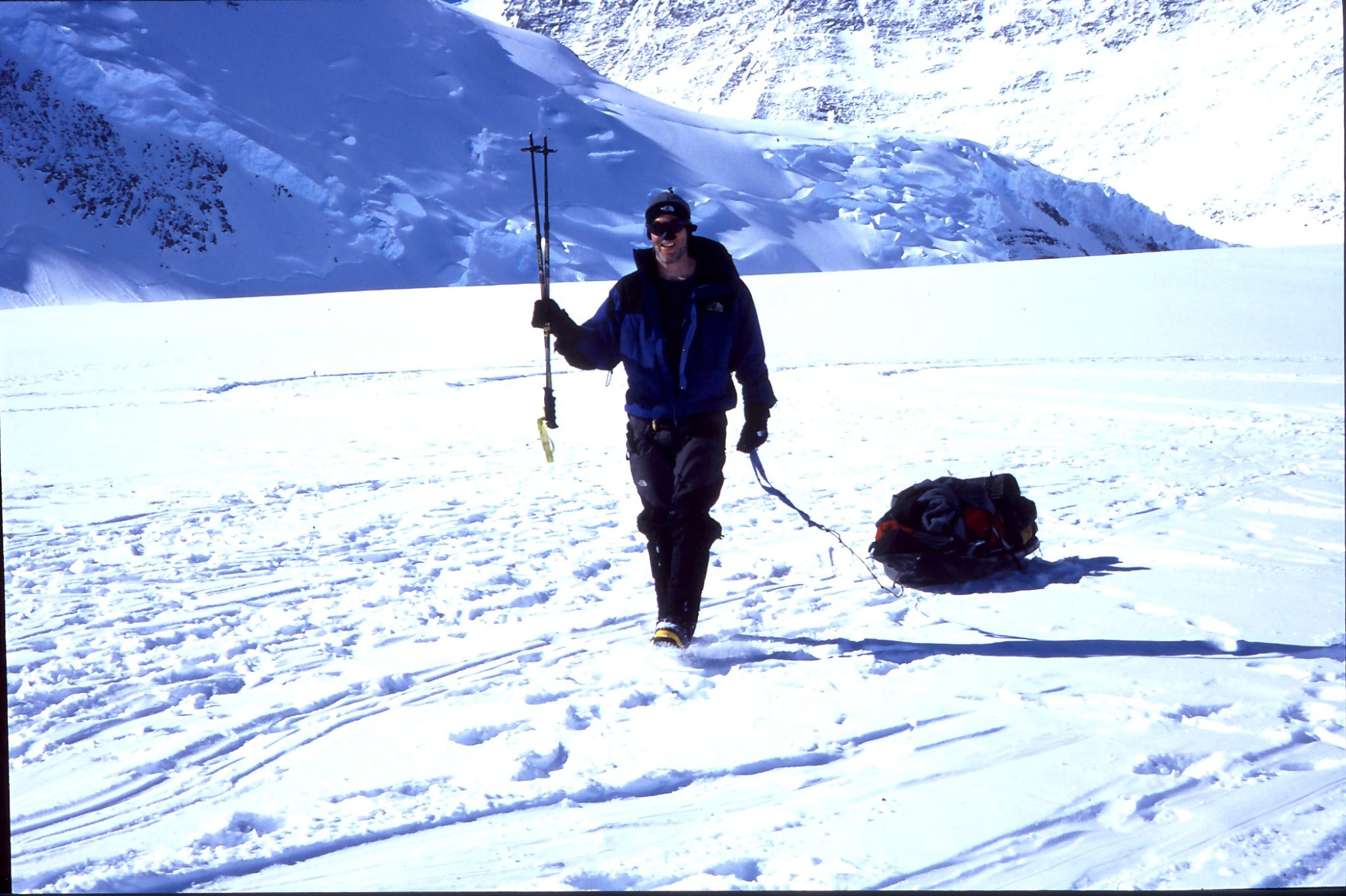
With your diving trips, you also document the state of the oceans in their remotest corners. How bad is the pollution of the deep sea?
Unfortunately, pretty significant pollution in the ocean is a documented fact. Within the first 15 minutes of my first dive to the bottom of Challenger Deep, I discovered human contamination. I was navigating around on the bottom exploring when I saw a very sharp right angle. Nature doesn’t do that. I steered the submarine over towards it and there was a small piece of something I couldn’t exactly identify – but it was man-made. It was probably plastic, but I’m not sure because I couldn’t grab it with my manipulator arm. But it definitely had faded writing on it. It looked like a big S. I photographed it and it was later analysed. But seeing it was like a punch in the gut. However, I would like to point out that while people are often concerned about visible pollution near the surface of the ocean, the real problem is microplastics. Once plastic comes into contact with the sea, it is broken down by a combination of salt water and ultraviolet light. And once microplastic particles enter the ocean, they stay there because there is no way to filter them out and eventually, they enter the food chain. We found microplastics in every one of the deep-sea trenches we explored. Only in about half of them did we find visible contamination. Microplastics are the real problem.
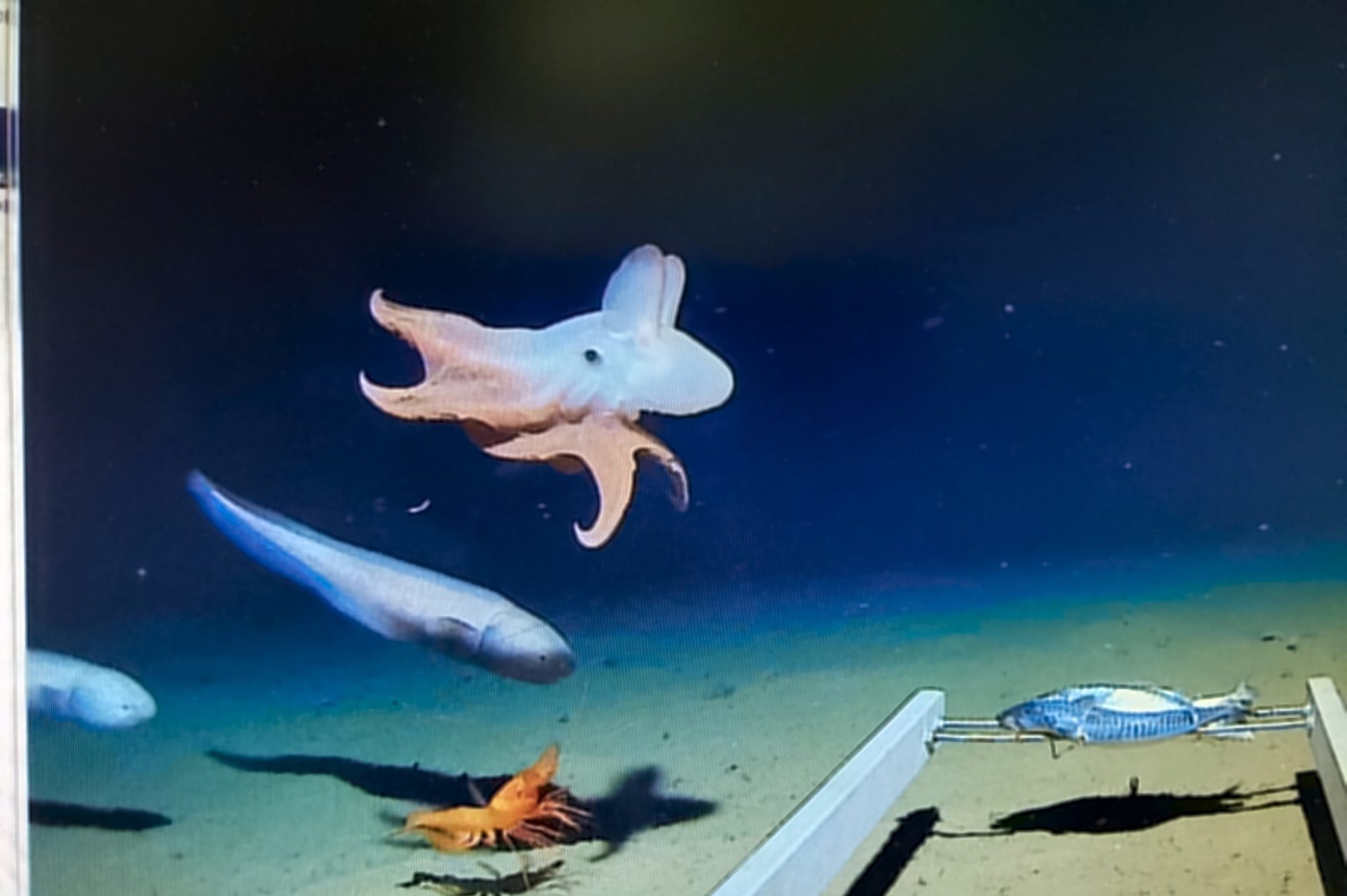
Is there also good news?
Yes! During our explorations we were able to encounter and film the deepest octopus, the deepest fish, the deepest squid and the deepest amphipod. And in all these cases, the depth range where we found them was deeper than scientists previously thought. This is great, because it means that the area in which they can live in is much larger than we thought, so there are a lot more of them. Therefore, there is even more life in the oceans than we thought five years ago, which means it could be a bigger biomass carbon sink. We still don’t know exactly how the oceans work because we usually only explore the first 1,000 or 2,000 metres of depth, because that’s all we’ve been able to easily reach. How the deep sea interacts with the environment is something we’re still trying to figure out. But understanding how the deep areas of the world interact with the shallower parts, and then the atmosphere, could have profound implications for climate models and carbon sink analysis. So deep-sea exploration is something that is very important to me. It’s something we need to continue to do.
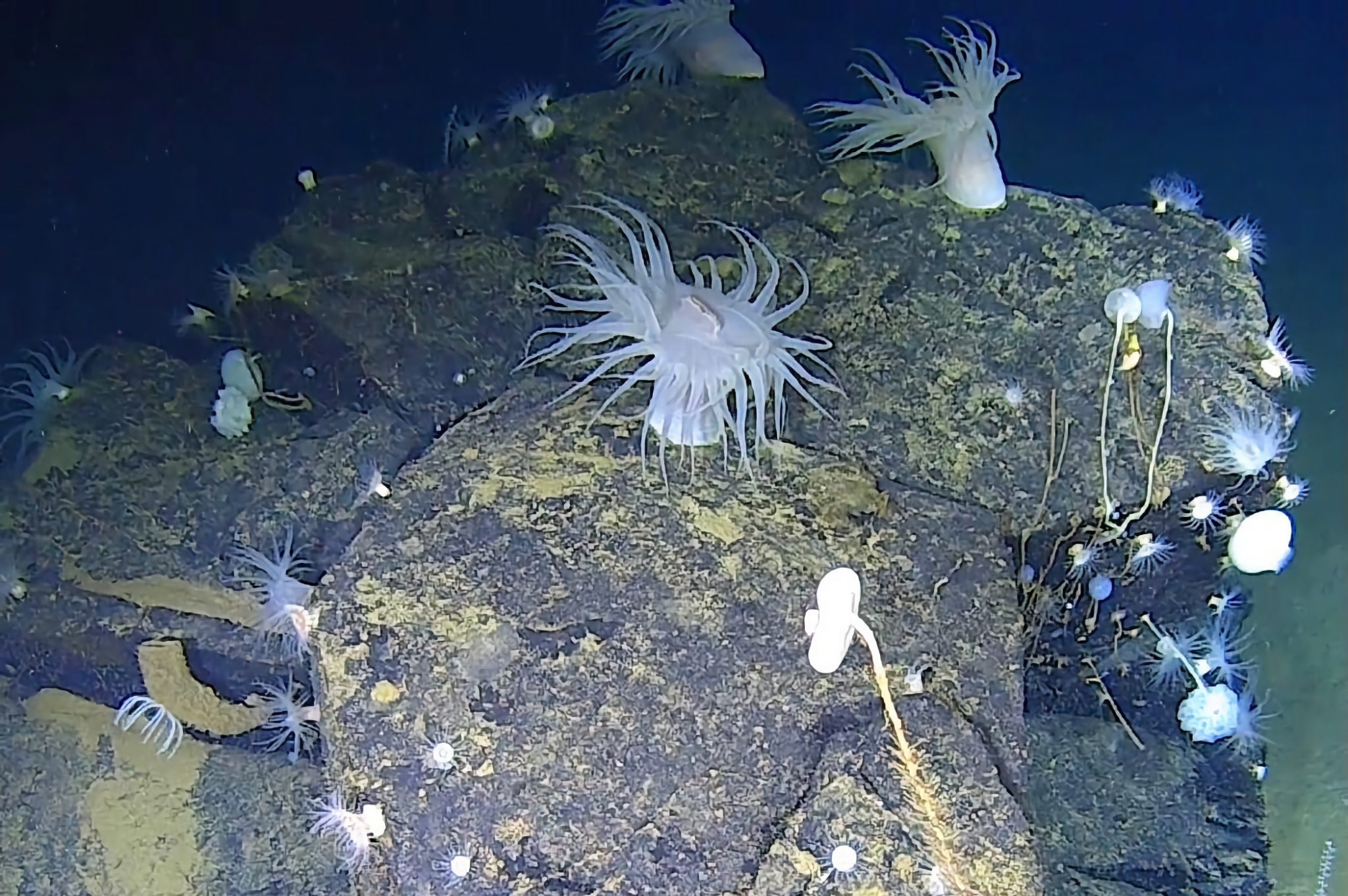
How many deep-sea boats would be needed to adequately explore the oceans?
Currently, there are only two submersibles in the world that can go down to the very deepest point in the ocean: The Limiting Factor and the Chinese Fendouzhe. That’s all. How many submarines can dive below 6,000 metres? I think there are just five operational. That’s about it. So, if you look at the relative budgets of space exploration and ocean exploration, they are vastly different. We would spend a billion dollars on a single space mission in a heartbeat. But a billion dollars for ocean research would be extraordinary. After all, it is public that the development of my entire system, the construction of the submersible, the mother ship and the journey around the world to get to the bottom of all five oceans cost about 50 million dollars. That’s less than the price of a Gulfstream private jet. And yet you can see what we have achieved.
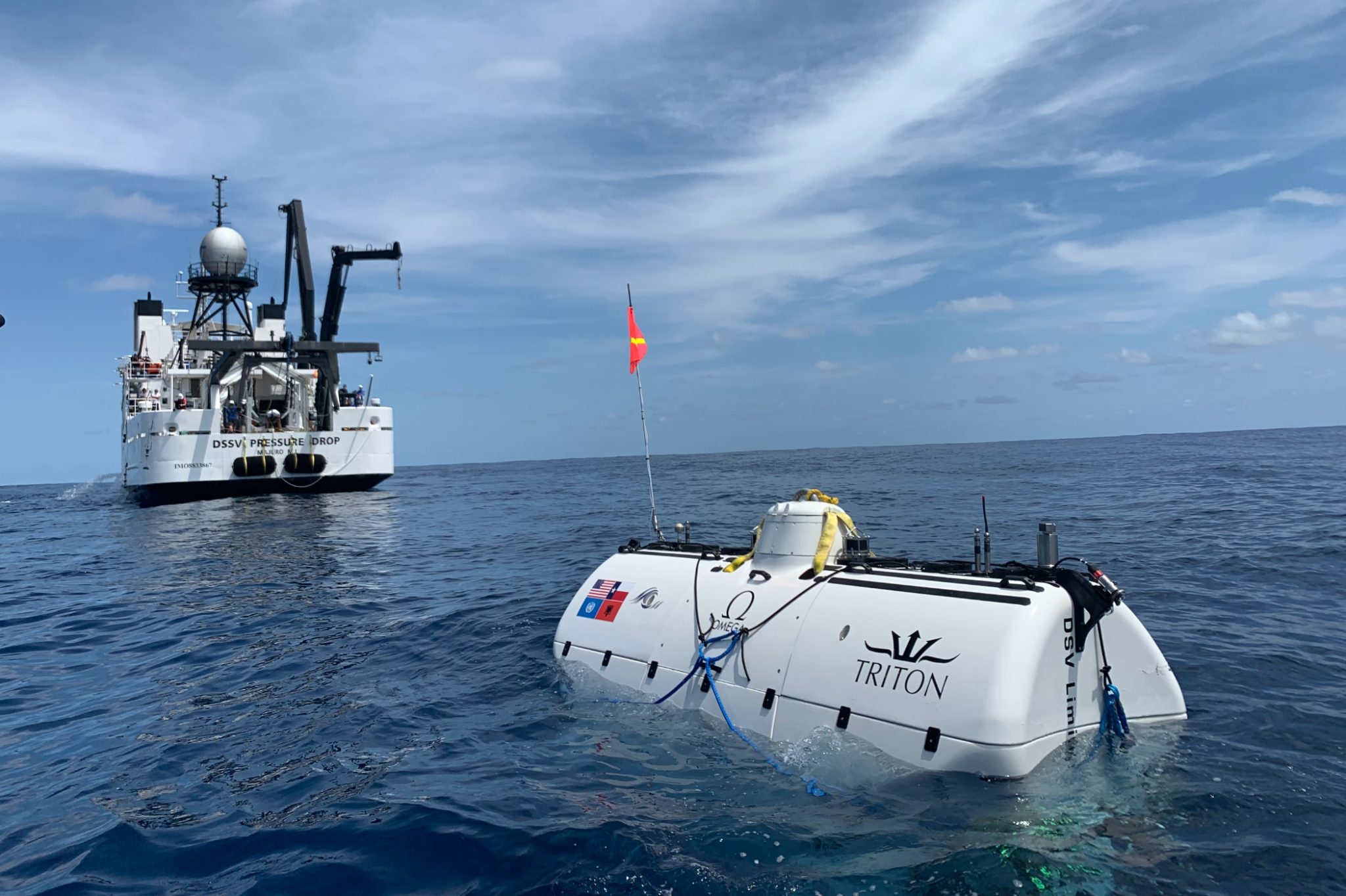
What do you think is the cause of this huge imbalance?
We talked about it a lot during the expedition. We had a ship’s doctor onboard who had studied this, who said that people have an instinctive fear of the sea. I think I remember reading once that babies are born with two innate fears: falling and drowning. People look at the ocean and can’t see into it. And once you’ve experienced a really bad storm at sea, you never forget it. The deep ocean feels dangerous and looks dangerous. So, I think there is a certain primal fear about venturing into deep water. Below 6,000 metres, which is referred to as the Hadal Zone, is derived from the word Hades, meaning hell. Thus, we have named the deepest area of the ocean after hell itself. If that doesn’t express how we instinctively feel about the ocean, then I don’t know.
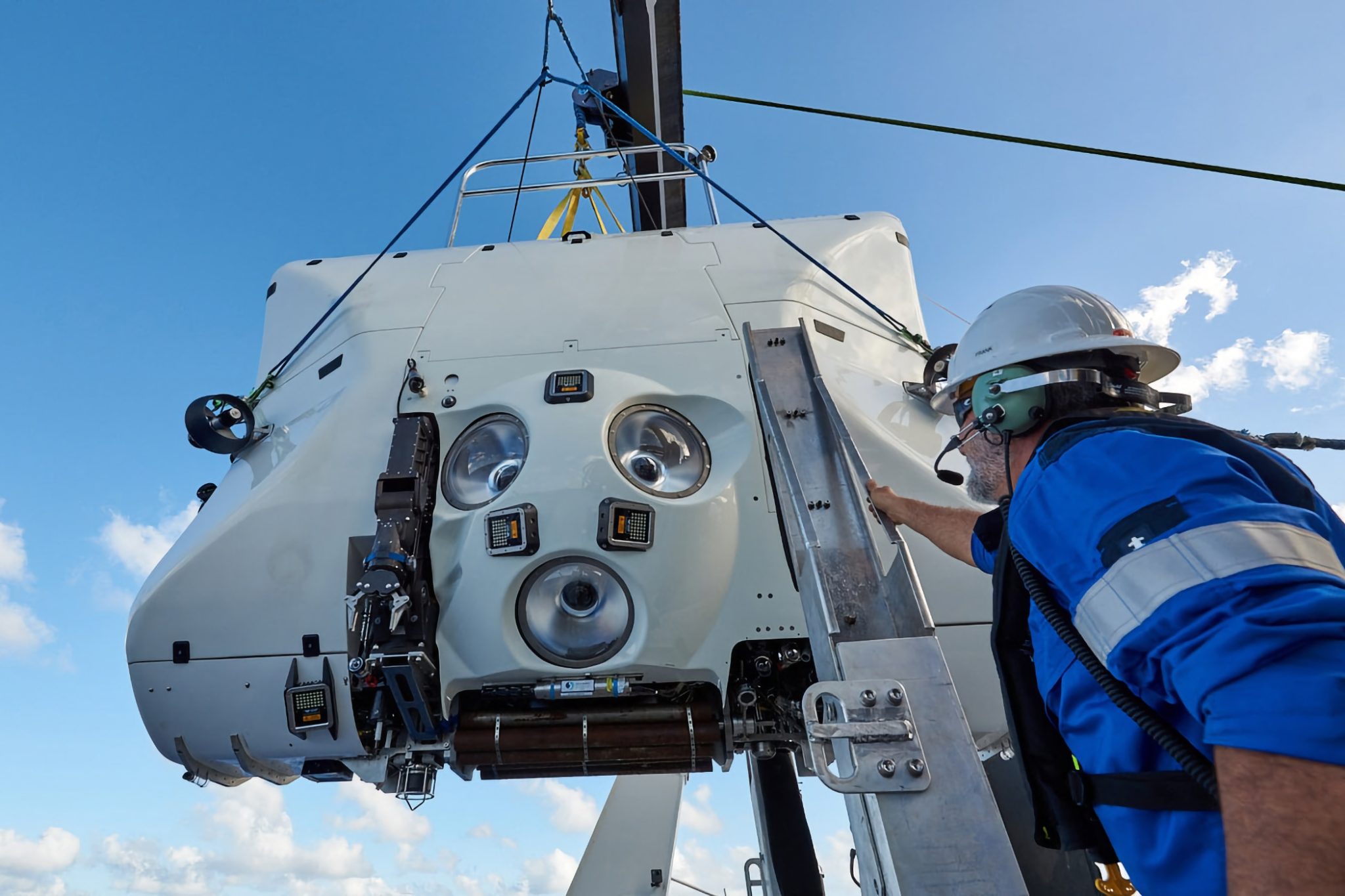
You mentioned new species found in the deep sea…
We found new species practically every time we dove, because no one had ever been to these places before. If you look closely at the deep-sea trenches, they are isolated. As a result, different evolutionary branches have developed over millions of years. I could show you creatures from the Mariana Trench on my phone, for example. One unusual thing about them is that they have absolutely no pigmentation. In fact, they are completely transparent; because there is no light down there, they don’t need pigmentation, so you can see their insides. The Mariana Trench was teeming with life. I saw sea cucumbers and amphipods, even worms coming out of the bottom silt layer. Such pressure, such cold temperatures, and yet life still finds a way. I am sure they looked at my submersible and thought I was an alien.
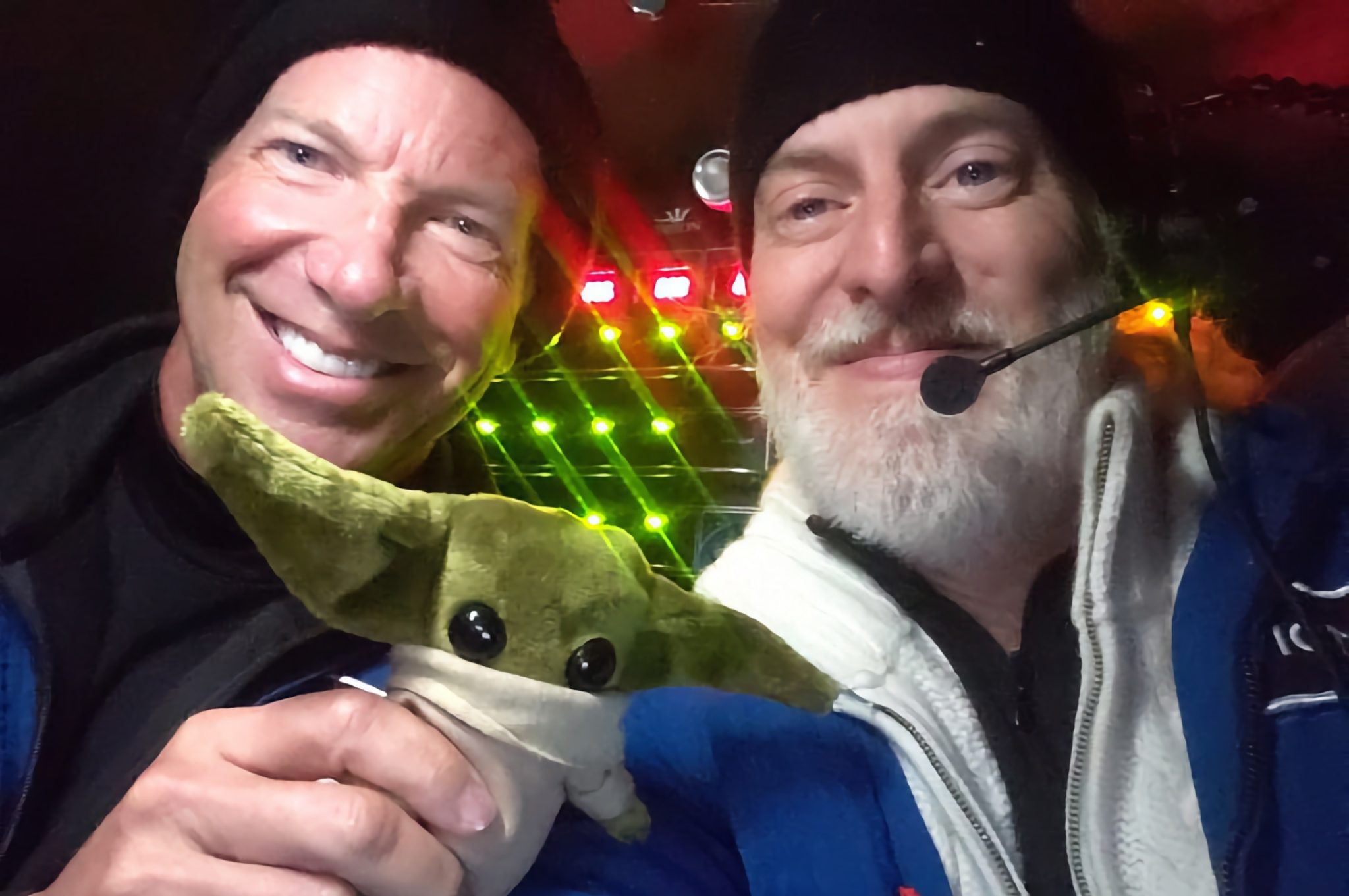
People want to get into a submarine with you, or at least experience it once.
I’ve been fortunate to have quite a few people dive with me, but if they quickly get claustrophobic, it’s not a good idea. The longest dive mission we undertook at the Challenger Deep lasted four and a half hours to get to the bottom, 4 hours and fifteen minutes on the bottom, and the ascent took over another 3 hours. We were in the submersible for over 13 hours. It got a bit cold.
What does it feel like at the bottom of the ocean?
The best words that immediately come to mind are that it is peaceful, it feels very ancient, but is also forbidding. I’ve now been to the bottom of 17 deep ocean trenches and with the exception of the Mariana Trench, I am pretty sure I was the first person down to their deepest points. It could feel like being in outer space when diving. It seemed that with every dive, we found new species and new information about the deep ocean, simply because no one had ever been there.
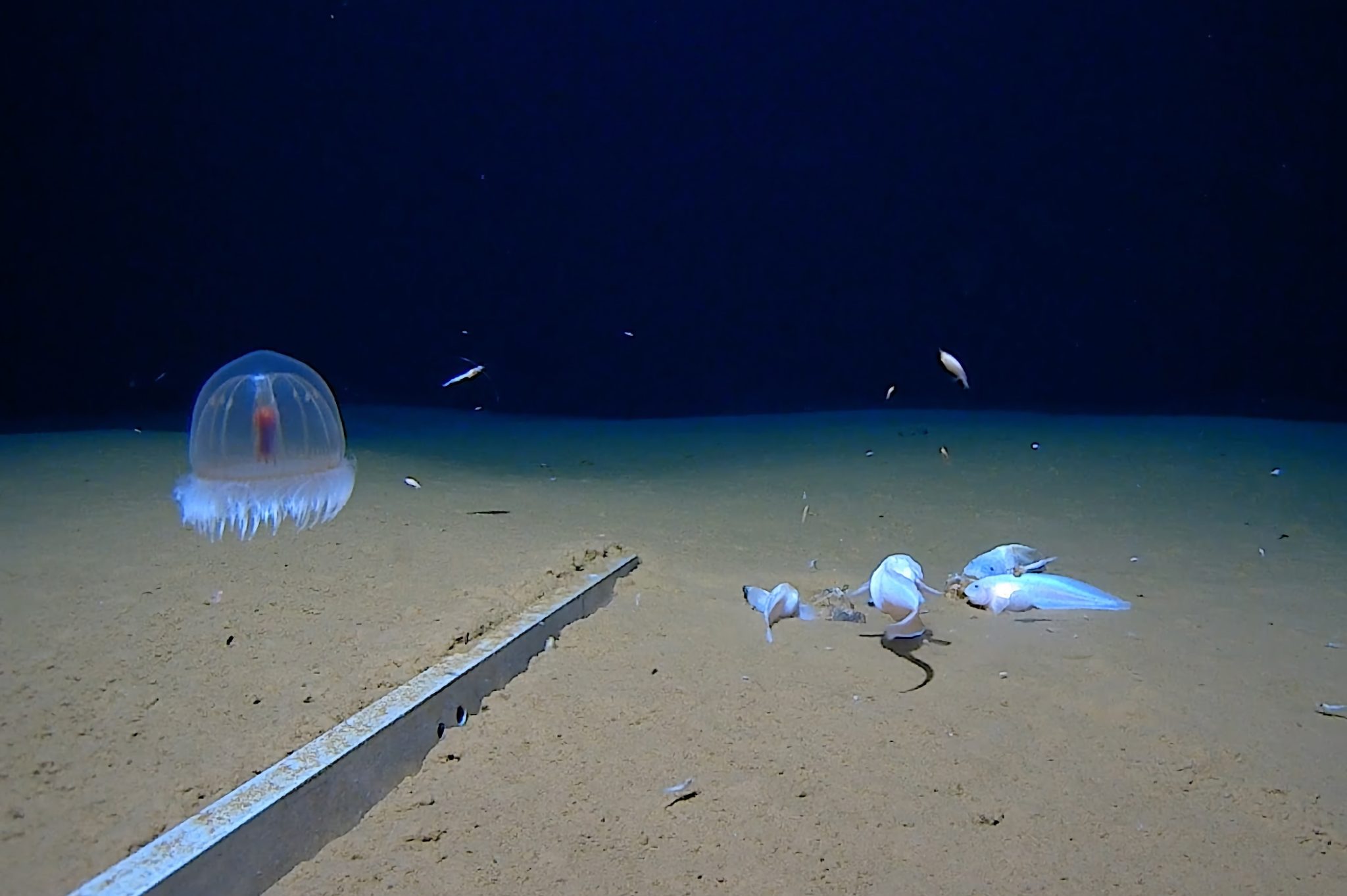
You have already been to space, to the highest mountain in the world, and to the North and South Pole. What is the difference when it comes to the deep sea?
Good question. Most people always want to know which is better – the deep ocean, or space, for example. But to me, it’s actually a triangle of extremes, I explain: the deep ocean is dark, you can see a maximum of 30 or 40 metres with headlights. But paradoxically, it feels like a very, very old place. When you see the tectonic plates slowly colliding right in front of you in geological time, it’s an incredible feeling. When you climb Mount Everest, it can feel like you’re in a death struggle with the gods. The winds and the weather are so thunderously loud around you that you can’t hear anything, and you are freezing as well as hypoxic. Above 8,000 meters, you are in the so-called “death zone” because even if you stop and rest, you are actually just dying a little more slowly. You cannot survive there or get stronger by resting. So mountain climbing is incredibly draining mentally, physically, and even spiritually. Space, on the other hand, felt like going to a rock concert to me. Those were some the most intense 15 minutes of my entire life. You go up vertically at Mach 3 on, essentially, a ten-story bomb, and after three or four minutes you separate and are thrown upward even higher into weightlessness. You see planet Earth below you, the sun is incredibly bright against a black sky, and then before you know it you have to strap yourself in again and hurtle towards the Earth under 5 g’s of force. And then, while hurtling down, you keep wondering: where are the parachutes? Okay ..where are the parachutes.. and so you’re very relieved when you feel them open and jerk the capsule to a slower descent. It was an incredible experience but very different from all the others. And believe me, I feel incredibly privileged to have had all three of these experiences. I’ve been told that I am the first person to do all three.
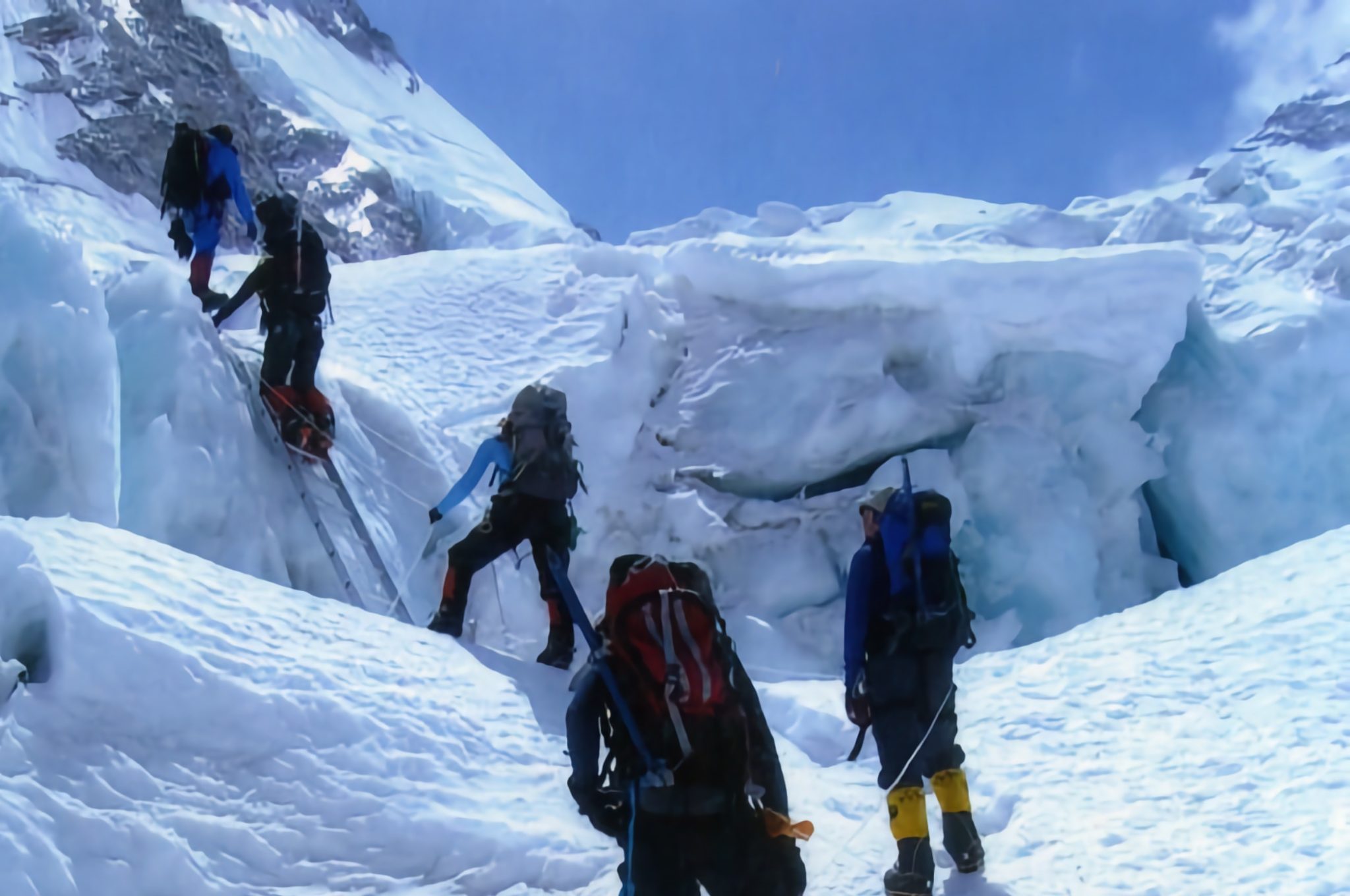
To what extent have you been inspired by past explorers?
Very much. The Norwegian, Roald Amundsen, is probably my greatest exploration hero. You learn from people like him what you should avoid to be safe. Since expeditions can be a matter of life or death, it’s extremely important not to have to learn these things yourself in the moment. Roald Amundsen, for example, was extremely good at studying and analysing things in advance. He was methodical and tested equipment and theories of how to accomplish his mission before he used them. When he set off for the South Pole, there was actually little drama because he had already planned and prepared everything so well in advance. Even when things went wrong, his team had fallback options. That’s how you should plan expeditions. They should be as boring as possible, even though that means more exciting books may not be written about them. If heroics are needed in expeditions, you’ve probably planned and prepared inadequately. A sports journalist once asked me if I would prefer to die on an expedition because then I would die doing what I love so much. I answered: ‘No, because then I would have failed.” I’d prefer to die at home in my bed. I think that good exploration means reducing risk to an absolute minimum while still accomplishing even the most difficult of missions.
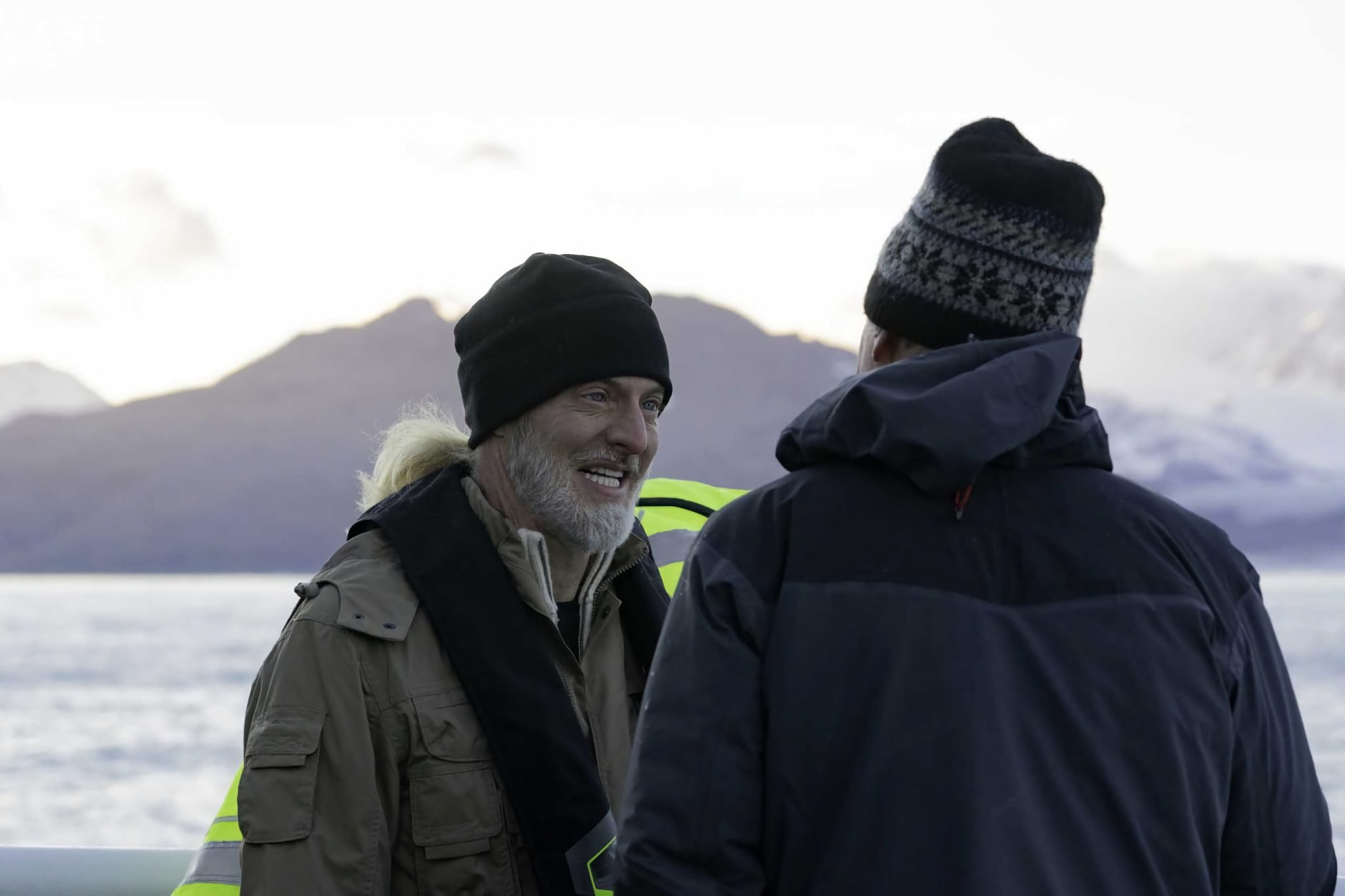
Today, people go to Antarctica on cruise ships. What do you think people will think about your expeditions in 100 years? And will there be any expeditions left at all?
I would suggest looking at aviation. 100 years ago, we had the Wright brothers and the first primitive aircraft. Today, we have supersonic aircraft. There are always new frontiers technologically and even on and beyond the Earth. For the oceans, I really hope that by then, reaching Challenger Deep will be very straightforward and quite common. I have no idea how that will be possible, but I hope that what we are doing will move the ball forward enough technologically to pave the way for much easier, less expensive, and greater access to the deepest of waters.
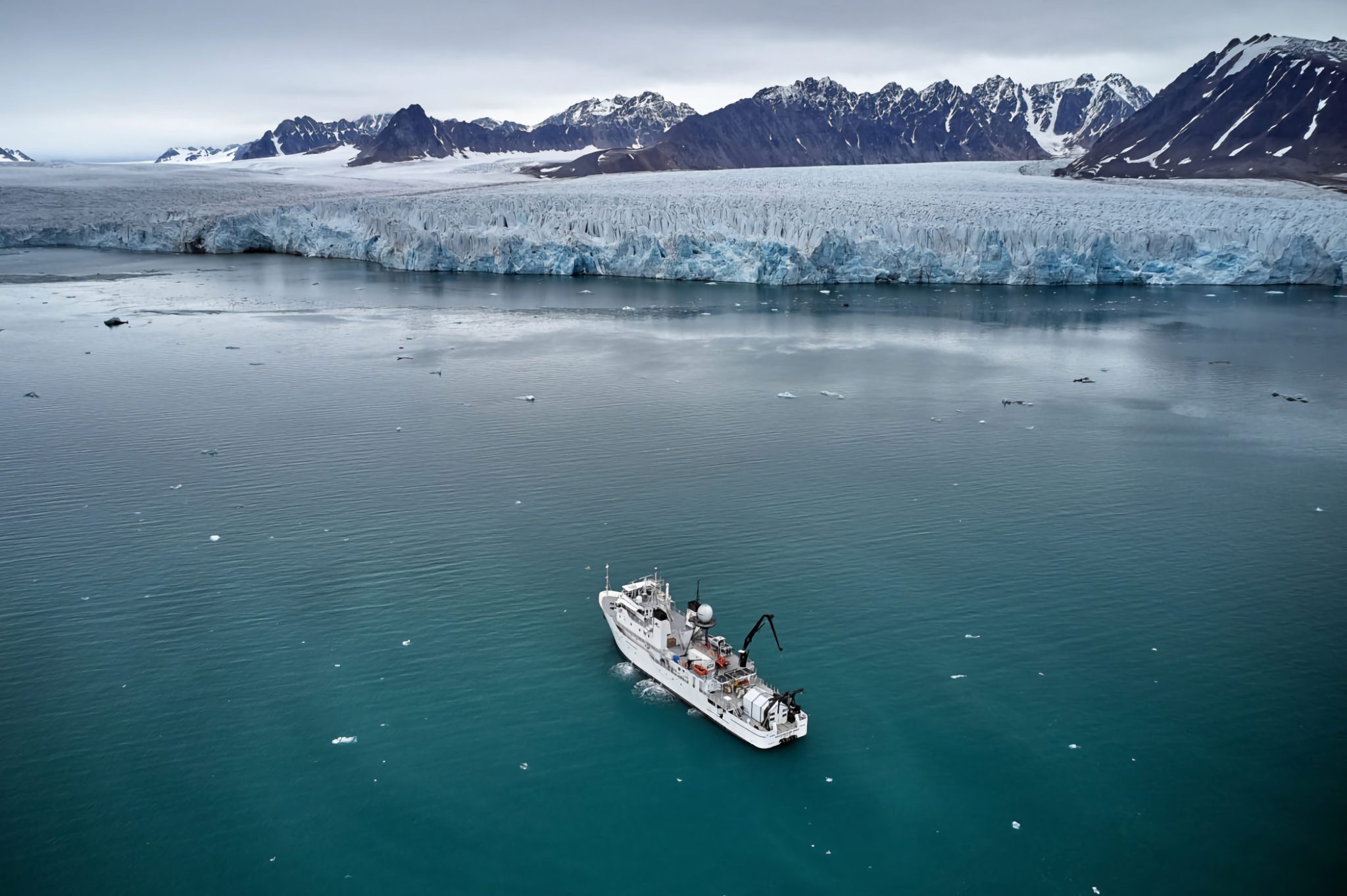
Won’t we then have the same problem in the deep sea tomorrow as we have with cruise ships today? Even more pollution?
It is my hope that the more people get to know and appreciate the oceans and deep sea, the more they will try to protect it. People protect what they love, and they love what they know well. At the moment, we treat the oceans very poorly, almost like a landfill with disregard for the majority of life – which lives in the ocean. Hopefully, over time, we can appreciate the ocean more and take much better care of it. It helps determine how well we can survive on land.
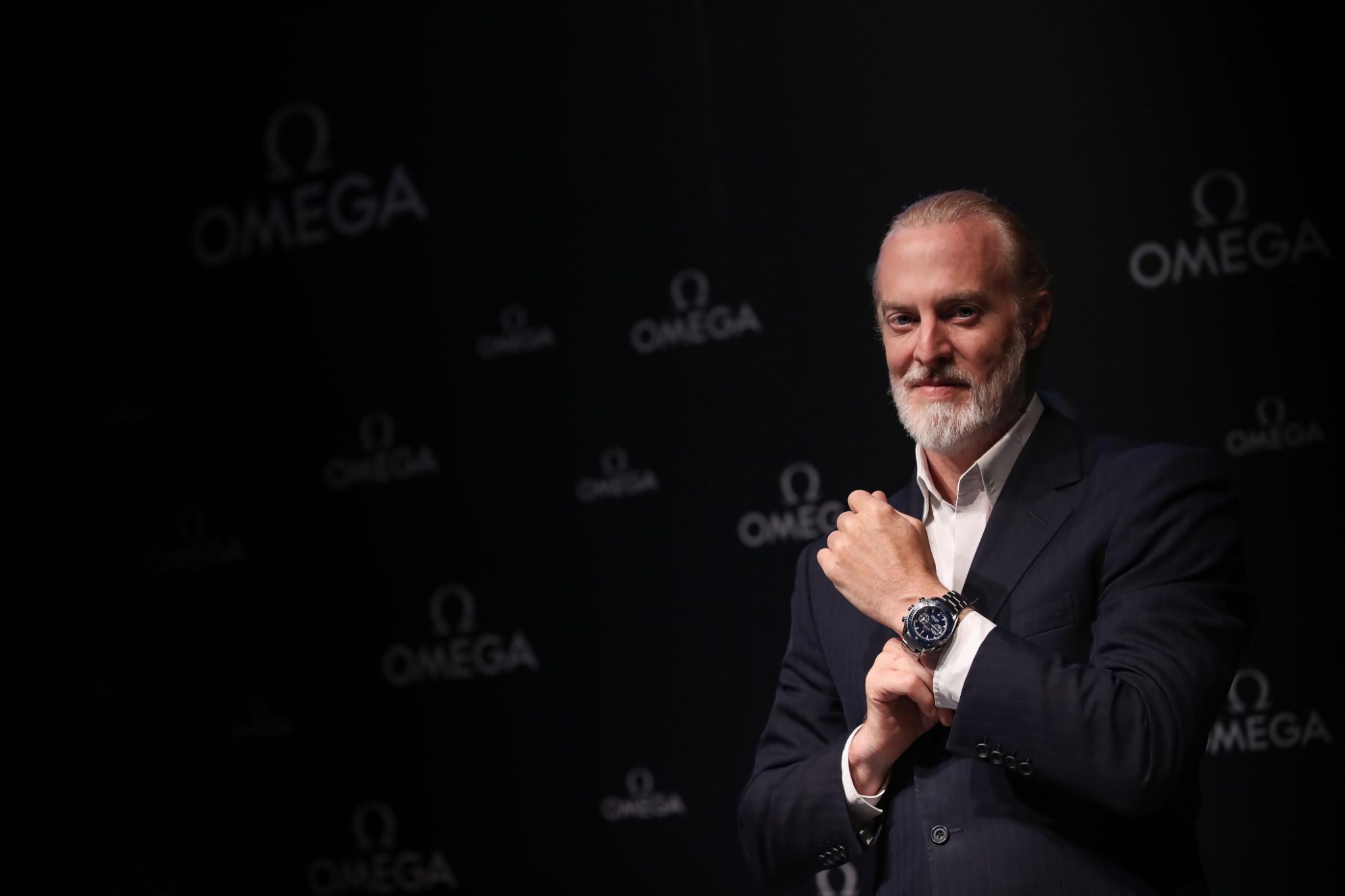
Speaking of existence. If you had the chance to go to Mars, would you do it – like Elon Musk wants to do so badly?
I wouldn’t hesitate for a second. Even if it seems to contradict what I just said about risk management. For the first people that go there, it may very likely be a one-way trip, because of all the unknowns and how far you would be away from help. But even then, I would still want to make the journey. There are some extreme risks worth taking. And going to Mars? Oh yes.
